Швейцария
Швейцарская Конфедерация Пять официальных названий | |
|---|---|
| Девиз: (неофициальный) « Один за всех, все за одного » «Один за всех, все за одного» | |
| Гимн: « Швейцарский псалом ». | |
 Location of Switzerland (green) in Europe (green and dark grey) | |
| Capital | 46°57′N 7°27′E / 46.950°N 7.450°E |
| Largest city | Zurich |
| Official languages | |
| Religion (2022)[3] |
|
| Demonym(s) | |
| Government | Federal assembly-independent[4][5] directorial republic |
| Viktor Rossi | |
| Legislature | Federal Assembly |
| Council of States | |
| National Council | |
| History | |
• Founded | 1 August 1291[b] |
• Sovereignty recognised (Peace of Westphalia) | 24 October 1648 |
| 7 August 1815 | |
| 12 September 1848[c][6] | |
| Area | |
• Total | 41,285 km2 (15,940 sq mi) (132nd) |
• Water (%) | 4.34[7] |
| Population | |
• 2023 estimate | 8,902,308[8] (99th) |
• 2015 census | |
• Density | 207/km2 (536.1/sq mi) (48th) |
| GDP (PPP) | 2024 estimate |
• Total | |
• Per capita | |
| GDP (nominal) | 2024 estimate |
• Total | |
• Per capita | |
| Gini (2022) | medium |
| HDI (2022) | very high (1st) |
| Currency | Swiss franc (CHF) |
| Time zone | UTC+1 (CET) |
• Summer (DST) | UTC+2 (CEST) |
| Date format | dd.mm.yyyy (Anno Domini) |
| Driving side | right |
| Calling code | +41 |
| ISO 3166 code | CH |
| Internet TLD | .ch, .swiss |
Швейцария , официально Швейцарская Конфедерация , является страной, не имеющей выхода к морю, расположенной в западно-центральной Европе . [д] [13] Граничит с Италией на юге, Францией на западе, Германией на севере и Австрией и Лихтенштейном на востоке. Швейцария географически разделена между Швейцарским плато , Альпами и Юрой ; Альпы занимают большую часть территории, тогда как большая часть 9-миллионного населения страны сосредоточена на плато, где расположены крупнейшие города и экономические центры, включая Цюрих , Женеву и Базель . [14]
Switzerland originates from the Old Swiss Confederacy established in the Late Middle Ages, following a series of military successes against Austria and Burgundy; the Federal Charter of 1291 is considered the country's founding document. Swiss independence from the Holy Roman Empire was formally recognised in the Peace of Westphalia in 1648. Switzerland has maintained a policy of armed neutrality since the 16th century and has not fought an international war since 1815. It joined the United Nations only in 2002 but pursues an active foreign policy that includes frequent involvement in peace building.[15]
Switzerland is the birthplace of the Red Cross and hosts the headquarters or offices of most major international institutions, including the WTO, the WHO, the ILO, FIFA, and the UN. It is a founding member of the European Free Trade Association (EFTA), but not part of the European Union (EU), the European Economic Area, or the eurozone; however, it participates in the European single market and the Schengen Area. Switzerland is a federal republic composed of 26 cantons, with federal authorities based in Bern.[a][2][1]
Switzerland is one of the world's most developed countries, with the highest nominal wealth per adult[16] and the eighth-highest gross domestic product (GDP) per capita.[17][18] Switzerland ranks first in the Human Development Index since 2021 and also performs highly on several international metrics, including economic competitiveness and democratic governance. Cities such as Zurich, Geneva and Basel rank among the highest in terms of quality of life,[19][20] albeit with some of the highest costs of living.[21]Switzerland holds an international reputation for its established banking sector, alongside its distinctive recognition for their watchmaking and chocolate production.
It has four main linguistic and cultural regions: German, French, Italian and Romansh. Although most Swiss are German-speaking, national identity is fairly cohesive, being rooted in a common historical background, shared values such as federalism and direct democracy,[22][page needed] and Alpine symbolism.[23][24] Swiss identity transcends language, ethnicity, and religion, leading to Switzerland being described as a Willensnation ("nation of volition") rather than a nation state.[25] Due to its linguistic diversity, Switzerland is known by multiple native names: Schweiz [ˈʃvaɪts][e] (German);[f] Suisse [sɥis(ə)] (French); Svizzera [ˈzvittsera] (Italian); and Svizra [ˈʒviːtsrɐ, ˈʒviːtsʁɐ][g] (Romansh). On coins and stamps, the Latin name, Confoederatio Helvetica—frequently shortened to "Helvetia"—is used instead of the spoken languages.
Etymology
The English name Switzerland is a portmanteau of Switzer, an obsolete term for a Swiss person which was in use during the 16th to 19th centuries, and land.[26] The English adjective Swiss is a loanword from French Suisse, also in use since the 16th century. The name Switzer is from the Alemannic Schwiizer, in origin an inhabitant of Schwyz and its associated territory, one of the Waldstätte cantons which formed the nucleus of the Old Swiss Confederacy. The Swiss began to adopt the name for themselves after the Swabian War of 1499, used alongside the term for "Confederates", Eidgenossen (literally: comrades by oath), used since the 14th century. The data code for Switzerland, CH, is derived from Latin Confoederatio Helvetica (Helvetic Confederation).
The toponym Schwyz itself was first attested in 972, as Old High German Suittes, perhaps related to swedan 'to burn' (cf. Old Norse svíða 'to singe, burn'), referring to the area of forest that was burned and cleared to build.[27] The name was extended to the area dominated by the canton, and after the Swabian War of 1499 gradually came to be used for the entire Confederation.[28][29] The Swiss German name of the country, Schwiiz, is homophonous to that of the canton and the settlement, but distinguished by the use of the definite article (d'Schwiiz for the Confederation,[30] but simply Schwyz for the canton and the town).[31] The long [iː] of Swiss German is historically and still often today spelled ⟨y⟩ rather than ⟨ii⟩, preserving the original identity of the two names even in writing.
The Latin name Confoederatio Helvetica was neologised and introduced gradually after the formation of the federal state in 1848, harking back to the Napoleonic Helvetic Republic. It appeared on coins from 1879, inscribed on the Federal Palace in 1902 and after 1948 used in the official seal[32] (e.g., the ISO banking code "CHF" for the Swiss franc, and the country top-level domain ".ch", are both taken from the state's Latin name). Helvetica is derived from the Helvetii, a Gaulish tribe living on the Swiss Plateau before the Roman era.
Helvetia appeared as a national personification of the Swiss confederacy in the 17th century in a 1672 play by Johann Caspar Weissenbach.[33]
History
The state of Switzerland took its present form with the adoption of the Swiss Federal Constitution in 1848. Switzerland's precursors established a defensive alliance in 1291, forming a loose confederation that persisted for centuries.
Beginnings
The oldest traces of hominid existence in Switzerland date to about 150,000 years ago.[34] The oldest known farming settlements in Switzerland, which were found at Gächlingen, date to around 5300 BC.[34]
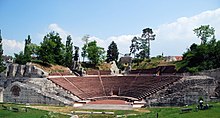
The earliest known tribes formed the Hallstatt and La Tène cultures, named after the archaeological site of La Tène on the north side of Lake Neuchâtel. La Tène culture developed and flourished during the late Iron Age from around 450 BC,[34] possibly influenced by Greek and Etruscan civilisations. One of the most important tribal groups was the Helvetii. Steadily harassed by Germanic tribes, in 58 BC, the Helvetii decided to abandon the Swiss Plateau and migrate to western Gallia. Julius Caesar's armies pursued and defeated them at the Battle of Bibracte, in today's eastern France, forcing the tribe to move back to its homeland.[34] In 15 BC, Tiberius (later the second Roman emperor) and his brother Drusus conquered the Alps, integrating them into the Roman Empire. The area occupied by the Helvetii first became part of Rome's Gallia Belgica province and then of its Germania Superior province. The eastern portion of modern Switzerland was integrated into the Roman province of Raetia. Sometime around the start of the Common Era, the Romans maintained a large camp called Vindonissa, now a ruin at the confluence of the Aare and Reuss rivers, near the town of Windisch.[36]
The first and second century AD was an age of prosperity on the Swiss Plateau. Towns such as Aventicum, Iulia Equestris and Augusta Raurica, reached a remarkable size, while hundreds of agricultural estates (Villae rusticae) were established in the countryside.[citation needed]
Around 260 AD, the fall of the Agri Decumates territory north of the Rhine transformed today's Switzerland into a frontier land of the Empire. Repeated raids by the Alamanni tribes provoked the ruin of the Roman towns and economy, forcing the population to shelter near Roman fortresses, like the Castrum Rauracense near Augusta Raurica. The Empire built another line of defence at the north border (the so-called Donau-Iller-Rhine-Limes). At the end of the fourth century, the increased Germanic pressure forced the Romans to abandon the linear defence concept. The Swiss Plateau was finally open to Germanic tribes.[citation needed]
In the Early Middle Ages, from the end of the fourth century, the western extent of modern-day Switzerland was part of the territory of the Kings of the Burgundians. The Alemanni settled the Swiss Plateau in the fifth century and the valleys of the Alps in the eighth century, forming Alemannia. Modern-day Switzerland was then divided between the kingdoms of Alemannia and Burgundy.[34] The entire region became part of the expanding Frankish Empire in the sixth century, following Clovis I's victory over the Alemanni at Tolbiac in 504 AD, and later Frankish domination of the Burgundians.[37][38]
Throughout the rest of the sixth, seventh and eighth centuries, Swiss regions continued under Frankish hegemony (Merovingian and Carolingian dynasties) but after its extension under Charlemagne, the Frankish Empire was divided by the Treaty of Verdun in 843.[34] The territories of present-day Switzerland became divided into Middle Francia and East Francia until they were reunified under the Holy Roman Empire around 1000 AD.[34]
By 1200, the Swiss Plateau comprised the dominions of the houses of Savoy, Zähringer, Habsburg, and Kyburg.[34] Some regions (Uri, Schwyz, Unterwalden, later known as Waldstätten) were accorded the Imperial immediacy to grant the empire direct control over the mountain passes. With the extinction of its male line in 1263, the Kyburg dynasty fell in AD 1264. The Habsburgs under King Rudolph I (Holy Roman Emperor in 1273) laid claim to the Kyburg lands and annexed them, extending their territory to the eastern Swiss Plateau.[37]
Old Swiss Confederacy
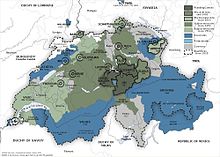

The Old Swiss Confederacy was an alliance among the valley communities of the central Alps. The Confederacy was governed by nobles and patricians of various cantons who facilitated management of common interests and ensured peace on mountain trade routes. The Federal Charter of 1291 is considered the confederacy's founding document, even though similar alliances likely existed decades earlier. The document was agreed among the rural communes of Uri, Schwyz, and Unterwalden.[39][page needed][40]
By 1353, the three original cantons had joined with the cantons of Glarus and Zug and the Lucerne, Zurich and Bern city-states to form the "Old Confederacy" of eight states that obtained through the end of the 15th century.[40] The expansion led to increased power and wealth for the confederation. By 1460, the confederates controlled most of the territory south and west of the Rhine to the Alps and the Jura mountains, and the University of Basel was founded (with a faculty of medicine) establishing a tradition of chemical and medical research. This increased after victories against the Habsburgs (Battle of Sempach, Battle of Näfels), over Charles the Bold of Burgundy during the 1470s, and the success of the Swiss mercenaries. The Swiss victory in the Swabian War against the Swabian League of Emperor Maximilian I in 1499 amounted to de facto independence within the Holy Roman Empire.[40] In 1501, Basel[41] and Schaffhausen joined the Old Swiss Confederacy.[42]
The Confederacy acquired a reputation of invincibility during these earlier wars, but expansion of the confederation suffered a setback in 1515 with the Swiss defeat in the Battle of Marignano. This ended the so-called "heroic" epoch of Swiss history.[40] The success of Zwingli's Reformation in some cantons led to inter-cantonal religious conflicts in 1529 and 1531 (Wars of Kappel). It was not until more than one hundred years after these internal wars that, in 1648, under the Peace of Westphalia, European countries recognised Switzerland's independence from the Holy Roman Empire and its neutrality.[37][38]
During the Early Modern period of Swiss history, the growing authoritarianism of the patriciate families combined with a financial crisis in the wake of the Thirty Years' War led to the Swiss peasant war of 1653. In the background to this struggle, the conflict between Catholic and Protestant cantons persisted, erupting in further violence at the First War of Villmergen, in 1656, and the Toggenburg War (or Second War of Villmergen), in 1712.[40]
Napoleonic era
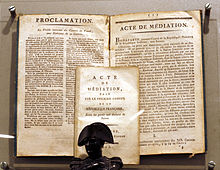
In 1798, the revolutionary French government invaded Switzerland and imposed a new unified constitution.[40] This centralised the government of the country, effectively abolishing the cantons: moreover, Mülhausen left Switzerland and the Valtellina valley became part of the Cisalpine Republic. The new regime, known as the Helvetic Republic, was highly unpopular. An invading foreign army had imposed and destroyed centuries of tradition, making Switzerland nothing more than a French satellite state. The fierce French suppression of the Nidwalden Revolt in September 1798 was an example of the oppressive presence of the French Army and the local population's resistance to the occupation.[citation needed]
When war broke out between France and its rivals, Russian and Austrian forces invaded Switzerland. The Swiss refused to fight alongside the French in the name of the Helvetic Republic. In 1803 Napoleon organised a meeting of the leading Swiss politicians from both sides in Paris. The Act of Mediation was the result, which largely restored Swiss autonomy and introduced a Confederation of 19 cantons.[40] Henceforth, much of Swiss politics would concern balancing the cantons' tradition of self-rule with the need for a central government.[43]
In 1815 the Congress of Vienna fully re-established Swiss independence, and the European powers recognised permanent Swiss neutrality.[37][38][40] Swiss troops served foreign governments until 1860 when they fought in the siege of Gaeta. The treaty allowed Switzerland to increase its territory, with the admission of the cantons of Valais, Neuchâtel and Geneva. Switzerland's borders saw only minor adjustments thereafter.[44]
Federal state
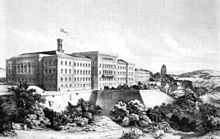
The restoration of power to the patriciate was only temporary. After a period of unrest with repeated violent clashes, such as the Züriputsch of 1839, civil war (the Sonderbundskrieg) broke out in 1847 when some Catholic cantons tried to set up a separate alliance (the Sonderbund).[40] The war lasted less than a month, causing fewer than 100 casualties, most of which were through friendly fire. The Sonderbundskrieg had a significant impact on the psychology and society of Switzerland.[citation needed][who?]
The war convinced most Swiss of the need for unity and strength. Swiss from all strata of society, whether Catholic or Protestant, from the liberal or conservative current, realised that the cantons would profit more from merging their economic and religious interests.[citation needed]
Thus, while the rest of Europe saw revolutionary uprisings, the Swiss drew up a constitution that provided for a federal layout, much of it inspired by the American example. This constitution provided central authority while leaving the cantons the right to self-government on local issues. Giving credit to those who favoured the power of the cantons (the Sonderbund Kantone), the national assembly was divided between an upper house (the Council of States, two representatives per canton) and a lower house (the National Council, with representatives elected from across the country). Referendums were made mandatory for any amendments.[38] This new constitution ended the legal power of nobility in Switzerland.[45]

A single system of weights and measures was introduced, and in 1850 the Swiss franc became the Swiss single currency, complemented by the WIR franc in 1934.[46] Article 11 of the constitution forbade sending troops to serve abroad, marking the end of foreign service. It came with the expectation of serving the Holy See, and the Swiss were still obliged to serve Francis II of the Two Sicilies with Swiss Guards present at the siege of Gaeta in 1860.[citation needed]
An important clause of the constitution was that it could be entirely rewritten, if necessary, thus enabling it to evolve as a whole rather than being modified one amendment at a time.[47][page needed]
This need soon proved itself when the rise in population and the Industrial Revolution that followed led to calls to modify the constitution accordingly. The population rejected an early draft in 1872, but modifications led to its acceptance in 1874.[40] It introduced the facultative referendum for laws at the federal level. It also established federal responsibility for defence, trade, and legal matters.
In 1891, the constitution was revised with uncommonly strong elements of direct democracy, which remain unique today.[40]
Modern history
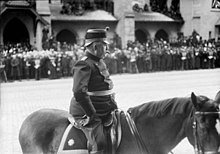
Switzerland was not invaded during either of the world wars. During World War I, Switzerland was home to the revolutionary and founder of the Soviet Union Vladimir Illych Ulyanov (Vladimir Lenin) who remained there until 1917.[48] Swiss neutrality was seriously questioned by the short-lived Grimm–Hoffmann affair in 1917. In 1920, Switzerland joined the League of Nations, which was based in Geneva, after it was exempted from military requirements.[49]
During World War II, detailed invasion plans were drawn up by the Germans,[50] but Switzerland was never attacked.[51] Switzerland was able to remain independent through a combination of military deterrence, concessions to Germany, and good fortune, as larger events during the war intervened.[38][52] General Henri Guisan, appointed the commander-in-chief for the duration of the war ordered a general mobilisation of the armed forces. The Swiss military strategy changed from static defence at the borders to organised long-term attrition and withdrawal to strong, well-stockpiled positions high in the Alps, known as the Reduit. Switzerland was an important base for espionage by both sides and often mediated communications between the Axis and Allied powers.[52]
Switzerland's trade was blockaded by both the Allies and the Axis. Economic cooperation and extension of credit to Nazi Germany varied according to the perceived likelihood of invasion and the availability of other trading partners. Concessions reached a peak after a crucial rail link through Vichy France was severed in 1942, leaving Switzerland (together with Liechtenstein) entirely isolated from the wider world by Axis-controlled territory. Over the course of the war, Switzerland interned over 300,000 refugees[53] aided by the International Red Cross, based in Geneva. Strict immigration and asylum policies and the financial relationships with Nazi Germany raised controversy, only at the end of the 20th century.[54]: 521
During the war, the Swiss Air Force engaged aircraft of both sides, shooting down 11 intruding Luftwaffe planes in May and June 1940, then forcing down other intruders after a change of policy following threats from Germany. Over 100 Allied bombers and their crews were interned. Between 1940 and 1945, Switzerland was bombed by the Allies, causing fatalities and property damage.[52] Among the cities and towns bombed were Basel, Brusio, Chiasso, Cornol, Geneva, Koblenz, Niederweningen, Rafz, Renens, Samedan, Schaffhausen, Stein am Rhein, Tägerwilen, Thayngen, Vals, and Zurich. Allied forces maintained that the bombings, which violated the 96th Article of War, resulted from navigation errors, equipment failure, weather conditions, and pilot errors. The Swiss expressed fear and concern that the bombings were intended to put pressure on Switzerland to end economic cooperation and neutrality with Nazi Germany.[55] Court-martial proceedings took place in England. The US paid SFR 62M for reparations.[citation needed]
Switzerland's attitude towards refugees was complicated and controversial; over the course of the war, it admitted as many as 300,000 refugees[53] while refusing tens of thousands more,[54]: 107 including Jews persecuted by the Nazis.[54]: 114
After the war, the Swiss government exported credits through the charitable fund known as the Schweizerspende and donated to the Marshall Plan to help Europe's recovery, efforts that ultimately benefited the Swiss economy.[54]: 521
During the Cold War, Swiss authorities considered the construction of a Swiss nuclear bomb.[56] Leading nuclear physicists at the Federal Institute of Technology Zurich such as Paul Scherrer made this a realistic possibility.[57] In 1988, the Paul Scherrer Institute was founded in his name to explore the therapeutic uses of neutron scattering technologies.[58] Financial problems with the defence budget and ethical considerations prevented the substantial funds from being allocated, and the Nuclear Non-Proliferation Treaty of 1968 was seen as a valid alternative. Plans for building nuclear weapons were dropped by 1988.[59] Switzerland joined the Council of Europe in 1963.[38]
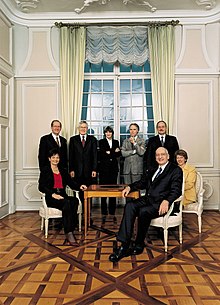
Switzerland was the last Western republic (the Principality of Liechtenstein followed in 1984) to grant women the right to vote. Some Swiss cantons approved this in 1959, while at the federal level, it was achieved in 1971[51][60][failed verification] and, after resistance, in the last canton Appenzell Innerrhoden (one of only two remaining Landsgemeinde, along with Glarus) in 1990. After obtaining suffrage at the federal level, women quickly rose in political significance. The first woman on the seven-member Federal Council executive was Elisabeth Kopp, who served from 1984 to 1989,[51] and the first female president was Ruth Dreifuss in 1999.[61]
In 1979 areas from the canton of Bern attained independence from the Bernese, forming the new canton of Jura. On 18 April 1999, the Swiss population and the cantons voted in favour of a completely revised federal constitution.[51]
In 2002 Switzerland became a full member of the United Nations, leaving Vatican City as the last widely recognised state without full UN membership. Switzerland is a founding member of the EFTA but not the European Economic Area (EEA). An application for membership in the European Union was sent in May 1992, but did not advance since rejecting the EEA in December 1992[51] when Switzerland conducted a referendum on the EEA. Several referendums on the EU issue ensued; due to opposition from the citizens, the membership application was withdrawn. Nonetheless, Swiss law is gradually changing to conform with that of the EU, and the government signed bilateral agreements with the European Union. Switzerland, together with Liechtenstein, has been surrounded by the EU since Austria's entry in 1995. On 5 June 2005, Swiss voters agreed by a 55% majority to join the Schengen treaty, a result that EU commentators regarded as a sign of support.[38] In September 2020, a referendum calling for a vote to end the pact that allowed a free movement of people from the European Union was introduced by the Swiss People's Party (SVP).[62] However, voters rejected the attempt to retake control of immigration, defeating the motion by a roughly 63%–37% margin.[63]
On 9 February 2014, 50.3% of Swiss voters approved a ballot initiative launched by the Swiss People's Party (SVP/UDC) to restrict immigration. This initiative was mostly backed by rural (57.6% approval) and suburban groups (51.2% approval), and isolated towns (51.3% approval) as well as by a strong majority (69.2% approval) in Ticino, while metropolitan centres (58.5% rejection) and the French-speaking part (58.5% rejection) rejected it.[64] In December 2016, a political compromise with the EU was attained that eliminated quotas on EU citizens, but still allowed favourable treatment of Swiss-based job applicants.[65] On 27 September 2020, 62% of Swiss voters rejected the anti-free movement referendum by SVP.[66]
Geography

Extending across the north and south side of the Alps in west-central Europe, Switzerland encompasses diverse landscapes and climates across its 41,285 square kilometres (15,940 sq mi).[67]
Switzerland lies between latitudes 45° and 48° N, and longitudes 5° and 11° E. It contains three basic topographical areas: the Swiss Alps to the south, the Swiss Plateau or Central Plateau, and the Jura mountains on the west. The Alps are a mountain range running across the central and south of the country, constituting about 60% of the country's area. The majority of the population live on the Swiss Plateau. The Swiss Alps host many glaciers, covering 1,063 square kilometres (410 sq mi). From these originate the headwaters of several major rivers, such as the Rhine, Inn, Ticino and Rhône, which flow in the four cardinal directions, spreading across Europe. The hydrographic network includes several of the largest bodies of fresh water in Central and Western Europe, among which are Lake Geneva (Lac Léman in French), Lake Constance (Bodensee in German) and Lake Maggiore. Switzerland has more than 1500 lakes and contains 6% of Europe's freshwater stock. Lakes and glaciers cover about 6% of the national territory. Lake Geneva is the largest lake and is shared with France. The Rhône is both the main source and outflow of Lake Geneva. Lake Constance is the second largest and, like Lake Geneva, an intermediate step by the Rhine at the border with Austria and Germany. While the Rhône flows into the Mediterranean Sea at the French Camargue region and the Rhine flows into the North Sea at Rotterdam, about 1,000 kilometres (620 miles) apart, both springs are only about 22 kilometres (14 miles) apart in the Swiss Alps.[67][68]
Forty-eight mountains are 4,000 metres (13,000 ft) or higher in height.[67] At 4,634 m (15,203 ft), Monte Rosa is the highest, although the Matterhorn (4,478 m or 14,692 ft) is the best known. Both are located within the Pennine Alps in the canton of Valais, on the border with Italy. The section of the Bernese Alps above the deep glacial Lauterbrunnen valley, containing 72 waterfalls, is well known for the Jungfrau (4,158 m or 13,642 ft) Eiger and Mönch peaks, and its many picturesque valleys. In the southeast the long Engadin Valley, encompassing St. Moritz, is also well known; the highest peak in the neighbouring Bernina Alps is Piz Bernina (4,049 m or 13,284 ft).[67]
The Swiss Plateau has greater open and hilly landscapes, partly forested, partly open pastures, usually with grazing herds or vegetable and fruit fields, but it is still hilly. Large lakes and the biggest Swiss cities are found there.[67]
Switzerland contains two small enclaves: Büsingen belongs to Germany, while Campione d'Italia belongs to Italy.[69] Switzerland has no exclaves.
Climate
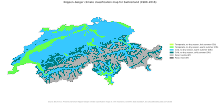
The Swiss climate is generally temperate, but can vary greatly across localities,[70] from glacial conditions on the mountaintops to the near-Mediterranean climate at Switzerland's southern tip. Some valley areas in the southern part of Switzerland offer cold-hardy palm trees. Summers tend to be warm and humid at times with periodic rainfall, ideal for pastures/grazing. The less humid winters in the mountains may see weeks-long intervals of stable conditions. At the same time, the lower lands tend to suffer from inversion during such periods, hiding the sun.[citation needed]
A weather phenomenon known as the föhn (with an identical effect to the chinook wind) can occur any time and is characterised by an unexpectedly warm wind, bringing low relative humidity air to the north of the Alps during rainfall periods on the south-facing slopes. This works both ways across the alps but is more efficient if blowing from the south due to the steeper step for oncoming wind. Valleys running south to north trigger the best effect. The driest conditions persist in all inner alpine valleys that receive less rain because arriving clouds lose a lot of their moisture content while crossing the mountains before reaching these areas. Large alpine areas such as Graubünden remain drier than pre-alpine areas, and as in the main valley of the Valais, wine grapes are grown there.[71]
The wettest conditions persist in the high Alps and in the Ticino canton, which has much sun yet heavy bursts of rain from time to time.[71] Precipitation tends to be spread moderately throughout the year, with a peak in summer. Autumn is the driest season, winter receives less precipitation than summer, yet the weather patterns in Switzerland are not in a stable climate system. They can vary from year to year with no strict and predictable periods.[citation needed]
Environment
Switzerland contains two terrestrial ecoregions: Western European broadleaf forests and Alps conifer and mixed forests.[72]
Switzerland's many small valleys separated by high mountains often host unique ecologies. The mountainous regions themselves offer a rich range of plants not found at other altitudes. The climatic, geological and topographical conditions of the alpine region make for a fragile ecosystem that is particularly sensitive to climate change.[70][73] According to the 2014 Environmental Performance Index, Switzerland ranks first among 132 nations in safeguarding the environment, due to its high scores on environmental public health, its heavy reliance on renewable sources of energy (hydropower and geothermal energy), and its level of greenhouse gas emissions.[74] In 2020 it was ranked third out of 180 countries.[75] The country pledged to cut GHG emissions by 50% by 2030 compared to the level of 1990 and plans to reach zero emissions by 2050.[76]
However, access to biocapacity in Switzerland is far lower than the world average. In 2016, Switzerland had 1.0 hectares[77] of biocapacity per person within its territory, 40 per cent less than world average of 1.6. In contrast, in 2016, Swiss consumption required 4.6 hectares of biocapacity – their ecological footprint, 4.6 times as much as Swiss territory can support. The remainder comes from other countries and the shared resources (such as the atmosphere impacted by greenhouse gas emissions).[77] Switzerland had a 2019 Forest Landscape Integrity Index mean score of 3.53/10, ranking it 150th globally out of 172 countries.[78]
Urbanisation
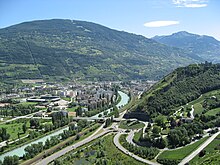
About 85% of the population live in urban areas.[79][80] Switzerland went from a largely rural country to an urban one from 1930 to 2000. After 1935 urban development claimed as much of the Swiss landscape as it did during the prior 2,000 years. Urban sprawl affects the plateau, the Jura and the Alpine foothills,[81] raising concerns about land use.[82] During the 21st century, population growth in urban areas is higher than in the countryside.[80]
Switzerland has a dense network of complementary large, medium and small towns.[80] The plateau is densely populated with about 400 people per km2 and the landscape shows uninterrupted signs of human presence.[83] The weight of the largest metropolitan areas – Zurich, Geneva–Lausanne, Basel and Bern – tend to increase.[80][clarification needed] The importance of these urban areas is greater than their population suggests.[80] These urban centers are recognised for their high quality of life.[84]
The average population density in 2019 was 215.2 inhabitants per square kilometre (557/sq mi).[85]: 79 In the largest canton by area, Graubünden, lying entirely in the Alps, population density falls to 28.0 inhabitants per square kilometre (73/sq mi).[85]: 30 In the canton of Zurich, with its large urban capital, the density is 926.8 per square kilometre (2,400/sq mi).[85]: 76
Government and politics

The Federal Constitution adopted in 1848 is the legal foundation of Switzerland's federal state.[86] A new Swiss Constitution was adopted in 1999 that did not introduce notable changes to the federal structure. It outlines rights of individuals and citizen participation in public affairs, divides the powers between the Confederation and the cantons and defines federal jurisdiction and authority. Three main bodies govern on the federal level:[87] the bicameral parliament (legislative), the Federal Council (executive) and the Federal Court (judicial).
Parliament
The Swiss Parliament consists of two houses: the Council of States which has 46 representatives (two from each canton and one from each half-canton) who are elected under a system determined by each canton, and the National Council, which consists of 200 members who are elected under a system of proportional representation, reflecting each canton's population. Members serve part-time for four years (a Milizsystem or citizen legislature).[88] When both houses are in joint session, they are known collectively as the Federal Assembly. Through referendums, citizens may challenge any law passed by parliament and, through initiatives, introduce amendments to the federal constitution, thus making Switzerland a direct democracy.[86]
Federal Council
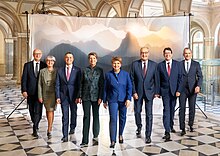
The Federal Council directs the federal government, the federal administration, and serves as a collective head of state. It is a collegial body of seven members, elected for a four-year term by the Federal Assembly, which also oversees the council. The President of the Confederation is elected by the Assembly from among the seven members, traditionally in rotation and for a one-year term; the President chairs the government and executes representative functions. The president is a primus inter pares with no additional powers and remains the head of a department within the administration.[86]
The government has been a coalition of the four major political parties since 1959, each party having a number of seats that roughly reflects its share of the electorate and representation in the federal parliament. The classic distribution of two CVP/PDC, two SPS/PSS, two FDP/PRD and one SVP/UDC as it stood from 1959 to 2003 was known as the "magic formula". Following the 2015 Federal Council elections, the seven seats in the Federal Council were distributed as follows:
- 1 seat for the Center Party (Die Mitte),[h]
- 2 seats for the Free Democratic Party (FDP/PRD),
- 2 seats for the Social Democratic Party (SPS/PSS),
- 2 seats for the Swiss People's Party (SVP/UDC).
Supreme Court
The function of the Federal Supreme Court is to hear appeals against rulings of cantonal or federal courts. The judges are elected by the Federal Assembly for six-year terms.[89]
Direct democracy

Direct democracy and federalism are hallmarks of the Swiss political system.[90] Swiss citizens are subject to three legal jurisdictions: the municipality, canton and federal levels. The 1848 and 1999 Swiss Constitutions define a system of direct democracy (sometimes called half-direct or representative direct democracy because it includes institutions of a representative democracy). The instruments of this system at the federal level, known as popular rights (German: Volksrechte, French: droits populaires, Italian: diritti popolari),[91] include the right to submit a federal initiative and a referendum, both of which may overturn parliamentary decisions.[86][92]
By calling a federal referendum, a group of citizens may challenge a law passed by parliament by gathering 50,000 signatures against the law within 100 days. If so, a national vote is scheduled where voters decide by a simple majority whether to accept or reject the law. Any eight cantons can also call a constitutional referendum on federal law.[86]
Similarly, the federal constitutional initiative allows citizens to put a constitutional amendment to a national vote, if 100,000 voters sign the proposed amendment within 18 months.[i] The Federal Council and the Federal Assembly can supplement the proposed amendment with a counterproposal. Then, voters must indicate a preference on the ballot if both proposals are accepted. Constitutional amendments, whether introduced by initiative or in parliament, must be accepted by a double majority of the national popular vote and the popular cantonal votes.[j][90]
Cantons
The Swiss Confederation consists of 26 cantons:[86][93]
 |
*These cantons are known as half-cantons.
The cantons are federated states. They have a permanent constitutional status and, in comparison with other countries, a high degree of independence. Under the Federal Constitution, all 26 cantons are equal in status, except that 6 (referred to often as the half-cantons) are represented by one councillor instead of two in the Council of States and have only half a cantonal vote with respect to the required cantonal majority in referendums on constitutional amendments. Each canton has its own constitution and its own parliament, government, police and courts.[93] However, considerable differences define the individual cantons, particularly in terms of population and geographical area. Their populations vary between 16,003 (Appenzell Innerrhoden) and 1,487,969 (Zurich), and their area between 37 km2 (14 sq mi) (Basel-Stadt) and 7,105 km2 (2,743 sq mi) (Grisons).
Municipalities
As of 2018 the cantons comprised 2,222 municipalities.
Federal City
Until 1848, the loosely coupled Confederation did not have a central political organisation. Issues thought to affect the whole Confederation were the subject of periodic meetings in various locations.[94]
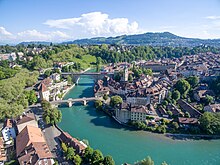
In 1848, the federal constitution provided that details concerning federal institutions, such as their locations, should be addressed by the Federal Assembly (BV 1848 Art. 108). Thus on 28 November 1848, the Federal Assembly voted in the majority to locate the seat of government in Bern and, as a prototypical federal compromise, to assign other federal institutions, such as the Federal Polytechnical School (1854, the later ETH) to Zurich, and other institutions to Lucerne, such as the later SUVA (1912) and the Federal Insurance Court (1917).[1] Other federal institutions were subsequently attributed to Lausanne (Federal Supreme Court in 1872, and EPFL in 1969), Bellinzona (Federal Criminal Court, 2004), and St. Gallen (Federal Administrative Court and Federal Patent Court, 2012).
The 1999 Constitution does not mention a Federal City and the Federal Council has yet to address the matter.[95] Thus no city in Switzerland has the official status either of capital or of Federal City. Nevertheless, Bern is commonly referred to as "Federal City" (German: Bundesstadt, French: ville fédérale, Italian: città federale).
Foreign relations and international institutions
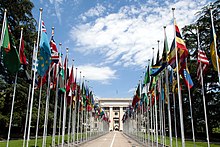
Traditionally, Switzerland avoids alliances that might entail military, political, or direct economic action and has been neutral since the end of its expansion in 1515. Its policy of neutrality was internationally recognised at the Congress of Vienna in 1815.[96][97] Swiss neutrality has been questioned at times.[98][99] In 2002 Switzerland became a full member of the United Nations.[96] It was the first state to join it by referendum. Switzerland maintains diplomatic relations with almost all countries and historically has served as an intermediary between other states.[96] Switzerland is not a member of the European Union; the Swiss people have consistently rejected membership since the early 1990s.[96] However, Switzerland does participate in the Schengen Area.[100]
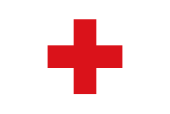
Many international institutions have headquarters in Switzerland, in part because of its policy of neutrality. Geneva is the birthplace of the Red Cross and Red Crescent Movement, the Geneva Conventions and, since 2006, hosts the United Nations Human Rights Council. Even though Switzerland is one of the most recent countries to join the United Nations, the Palace of Nations in Geneva is the second biggest centre for the United Nations after the headquarters in New York. Switzerland was a founding member and hosted the League of Nations.[49]
Apart from the United Nations headquarters, the Swiss Confederation is host to many UN agencies, including the World Health Organization (WHO), the International Labour Organization (ILO), the International Telecommunication Union (ITU), the United Nations High Commissioner for Refugees (UNHCR) and about 200 other international organisations, including the World Trade Organization and the World Intellectual Property Organization.[96] The annual meetings of the World Economic Forum in Davos bring together business and political leaders from Switzerland and foreign countries to discuss important issues. The headquarters of the Bank for International Settlements (BIS) moved to Basel in 1930.[citation needed]
Many sports federations and organisations are located in the country, including the International Handball Federation in Basel, the International Basketball Federation in Geneva, the Union of European Football Associations (UEFA) in Nyon, the International Federation of Association Football (FIFA) and the International Ice Hockey Federation both in Zurich, the International Cycling Union in Aigle, and the International Olympic Committee in Lausanne.[102]
Switzerland is scheduled to become a member of the United Nations Security Council for the 2023–2024 period.[103]
Switzerland and the European Union
Although not a member, Switzerland maintains relationships with the EU and European countries through bilateral agreements. The Swiss have brought their economic practices largely into conformity with those of the EU, in an effort to compete internationally. EU membership faces considerable negative popular sentiment. It is opposed by the conservative SVP party, the largest party in the National Council, and not advocated by several other political parties. The membership application was formally withdrawn in 2016. The western French-speaking areas and the urban regions of the rest of the country tend to be more pro-EU, but do not form a significant share of the population.[104][105]
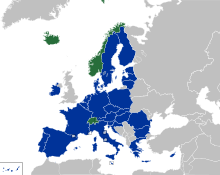
An Integration Office operates under the Department of Foreign Affairs and the Department of Economic Affairs. Seven bilateral agreements liberalised trade ties, taking effect in 2001. This first series of bilateral agreements included the free movement of persons. A second series of agreements covering nine areas was signed in 2004, including the Schengen Treaty and the Dublin Convention.[106]
In 2006, a referendum approved 1 billion francs of supportive investment in Southern and Central European countries in support of positive ties to the EU as a whole. A further referendum will be needed to approve 300 million francs to support Romania and Bulgaria and their recent admission.
The Swiss have faced EU and international pressure to reduce banking secrecy and raise tax rates to parity with the EU. Preparatory discussions involved four areas: the electricity market, participation in project Galileo, cooperating with the European Centre for Disease Prevention and Control and certificates of origin for food products.[107][needs update]
Switzerland is a member of the Schengen passport-free zone. Land border checkpoints apply on to goods movements, but not people.[108]
Military
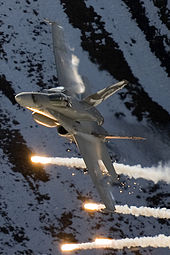
The Swiss Armed Forces, including the Land Forces and the Air Force, are composed mostly of conscripts, male citizens aged from 20 to 34 (in exceptional cases up to 50) years. Being a landlocked country, Switzerland has no navy; however, on lakes bordering neighbouring countries, armed boats patrol. Swiss citizens are prohibited from serving in foreign armies, except for the Swiss Guards of the Vatican, or if they are dual citizens of a foreign country and reside there.[citation needed]
The Swiss militia system stipulates that soldiers keep their army-issued equipment, including fully automatic personal weapons, at home.[109] Women can serve voluntarily. Men usually receive military conscription orders for training at the age of 18.[110] About two-thirds of young Swiss are found suitable for service; for the others, various forms of alternative service are available.[111] Annually, approximately 20,000 persons are trained in recruit centres for 18 to 21 weeks. The reform "Army XXI" was adopted by popular vote in 2003, replacing "Army 95", reducing the rolls from 400,000 to about 200,000. Of those, 120,000 are active in periodic Army training, and 80,000 are non-training reserves.[112]
The newest reform of the military, Weiterentwicklung der Armee (WEA; English: Further development of the Army), started in 2018 and was expected to reduce the number of army personnel to 100,000 by the end of 2022.[113][114]
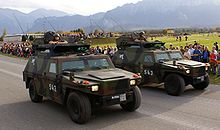
Overall, three general mobilisations have been declared to ensure the integrity and neutrality of Switzerland. The first mobilisation was held in response to the Franco-Prussian War of 1870–71; while the second was in response to the First World War outbreak in August 1914; the third mobilisation took place in September 1939 in response to the German attack on Poland.[115]
Because of its neutrality policy, the Swiss army does not take part in armed conflicts in other countries but joins some peacekeeping missions. Since 2000 the armed force department has maintained the Onyx intelligence gathering system to monitor satellite communications.[116]
Gun politics in Switzerland are unique in Europe in that 2–3.5 million guns are in the hands of civilians, giving the nation an estimate of 28–41 guns per 100 people.[117] As per the Small Arms Survey, only 324,484 guns are owned by the military.[118] Only 143,372 are in the hands of soldiers.[119] However, ammunition is no longer issued.[120][121]
Economy and labour law
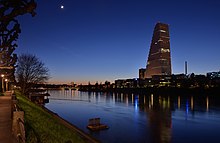
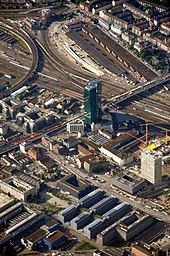
Switzerland has a stable, prosperous and high-tech economy. It is the world's wealthiest country per capita in multiple rankings. The country ranks as one of the least corrupt countries in the world,[125][126][127] while its banking sector is rated as "one of the most corrupt in the world".[128] It has the world's twentieth largest economy by nominal GDP and the thirty-eighth largest by purchasing power parity. As of 2021, it is the thirteenth largest exporter, and the fifth largest per capita. Zurich and Geneva are regarded as global cities, ranked as Alpha and Beta respectively. Basel is the capital of Switzerland's pharmaceutical industry, hosting Novartis, Roche, and many other players. It is one of the world's most important centres for the life sciences industry.[129]
Switzerland had the second-highest global rating in the Index of Economic Freedom 2023,[130] while also providing significant public services.[131] On a per capita basis, nominal GDP is higher than those of the larger Western and Central European economies and Japan,[132] while adjusted for purchasing power, Switzerland ranked 11th in 2017,[133] fifth in 2018[134] and ninth in 2020.[135]
The 2016 World Economic Forum's Global Competitiveness Report ranked Switzerland's economy as the world's most competitive;[136] as of 2019, it ranks fifth globally.[137] The European Union labeled it Europe's most innovative country and the most innovative country in the Global Innovation Index in 2023, as it had done in 2022, 2021, 2020 and 2019.[138][139][140][141] It ranked 20th of 189 countries in the Ease of Doing Business Index. Switzerland's slow growth in the 1990s and the early 2000s increased support for economic reforms and harmonisation with the European Union.[142][143] In 2020, IMD placed Switzerland first in attracting skilled workers.[144]
For much of the 20th century, Switzerland was the wealthiest country in Europe by a considerable margin (per capita GDP).[145] Switzerland has one of the world's largest account balances as a percentage of GDP.[146] In 2018, the canton of Basel-City had the highest GDP per capita, ahead of Zug and Geneva.[147] According to Credit Suisse, only about 37% of residents own their own homes, one of the lowest rates of home ownership in Europe. Housing and food price levels were 171% and 145% of the EU-25 index in 2007, compared to 113% and 104% in Germany.[148]
Switzerland is home to several large multinational corporations. The largest by revenue are Glencore, Gunvor, Nestlé, Mediterranean Shipping Company, Novartis, Hoffmann-La Roche, ABB, Mercuria Energy Group and Adecco.[149] Also, notable are UBS, Zurich Insurance, Richemont, Credit Suisse, Barry Callebaut, Swiss Re, Rolex, Tetra Pak, Swatch Group and Swiss International Air Lines.
Switzerland's most important economic sector is manufacturing. Manufactured products include specialty chemicals, health and pharmaceutical goods, scientific and precision measuring instruments and musical instruments. The largest exported goods are chemicals (34% of exported goods), machines/electronics (20.9%), and precision instruments/watches (16.9%).[148] The service sector – especially banking and insurance, commodities trading, tourism, and international organisations – is another important industry for Switzerland. Exported services amount to a third of exports.[148]
Agricultural protectionism—a rare exception to Switzerland's free trade policies—contributes to high food prices. Product market liberalisation is lagging behind many EU countries according to the OECD.[142] Apart from agriculture, economic and trade barriers between the European Union and Switzerland are minimal, and Switzerland has free trade agreements with many countries. Switzerland is a member of the European Free Trade Association (EFTA).
Switzerland is considered as the "land of Cooperatives" with the ten largest cooperative companies accounting for more than 11% of GDP in 2018. They include Migros and Coop, the two largest retail companies in Switzerland.[150]
Taxation and government spending
Switzerland is a tax haven.[151] The private sector economy dominates. It features low tax rates; tax revenue to GDP ratio is one of the smallest of developed countries. The Swiss Federal budget reached 62.8 billion Swiss francs in 2010, 11.35% of GDP; however, canton and municipality budgets are not counted as part of the federal budget. Total government spending is closer to 33.8% of GDP. The main sources of income for the federal government are the value-added tax (33% of tax revenue) and the direct federal tax (29%). The main areas of expenditure are in social welfare and finance/taxes. The expenditures of the Swiss Confederation have been growing from 7% of GDP in 1960 to 9.7% in 1990 and 10.7% in 2010. While the social welfare and finance sectors and tax grew from 35% in 1990 to 48.2% in 2010, a significant reduction of expenditures has been occurring in agriculture and national defence; from 26.5% to 12.4% (estimation for the year 2015).[152][153]
Labour force
Slightly more than 5 million people work in Switzerland;[154] about 25% of employees belonged to a trade union in 2004.[155] Switzerland has a more flexible labor market than neighbouring countries and the unemployment rate is consistently low. The unemployment rate increased from 1.7% in June 2000 to 4.4% in December 2009.[156] It then decreased to 3.2% in 2014 and held steady for several years,[157] before further dropping to 2.5% in 2018 and 2.3% in 2019.[158] Population growth (from net immigration) reached 0.52% of population in 2004, increased in the following years before falling to 0.54% again in 2017.[148][159] The foreign citizen population was 28.9% in 2015, about the same as in Australia.[160]
In 2016, the median monthly gross income in Switzerland was 6,502 francs per month (equivalent to US$6,597 per month).[161] After rent, taxes and pension contributions, plus spending on goods and services, the average household has about 15% of its gross income left for savings. Though 61% of the population made less than the mean income, income inequality is relatively low with a Gini coefficient of 29.7, placing Switzerland among the top 20 countries. In 2015, the richest 1% owned 35% of the wealth.[162] Wealth inequality increased through 2019.[163]
About 8.2% of the population live below the national poverty line, defined in Switzerland as earning less than CHF3,990 per month for a household of two adults and two children, and a further 15% are at risk of poverty. Single-parent families, those with no post-compulsory education and those out of work are among the most likely to live below the poverty line. Although work is considered a way out of poverty, some 4.3% are considered working poor. One in ten jobs in Switzerland is considered low-paid; roughly 12% of Swiss workers hold such jobs, many of them women and foreigners.[161]
Education and science
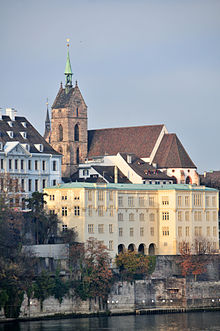
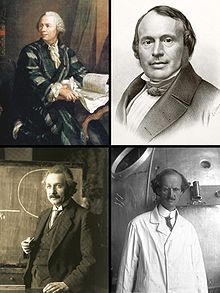
Leonhard Euler (mathematics)
Louis Agassiz (glaciology)
Auguste Piccard (aeronautics)
Albert Einstein (physics)
Education in Switzerland is diverse, because the constitution of Switzerland delegates the operation for the school system to the cantons.[164] Public and private schools are available, including many private international schools.
Primary education
The minimum age for primary school is about six years, but most cantons provide a free "children's school" starting at age four or five.[164] Primary school continues until grade four, five or six, depending on the school. Traditionally, the first foreign language in school was one of the other Swiss languages, although in 2000, English was elevated in a few cantons.[164] At the end of primary school or at the beginning of secondary school, pupils are assigned according to their capacities into one of several sections (often three). The fastest learners are taught advanced classes to prepare for further studies and the matura,[164] while other students receive an education adapted to their needs.
Tertiary education
Switzerland hosts 12 universities, ten of which are maintained at cantonal level and usually offer non-technical subjects. It ranked 87th on the 2019 Academic Ranking of World Universities.[165] The largest is the University of Zurich with nearly 25,000 students.[166] The Swiss Federal Institute of Technology Zurich (ETHZ) and the University of Zurich are listed 20th and 54th respectively, on the 2015 Academic Ranking of World Universities.[167]
The federal government sponsors two institutes: the Swiss Federal Institute of Technology Zurich (ETHZ) in Zurich, founded in 1855 and the École Polytechnique Fédérale de Lausanne (EPFL) in Lausanne, founded in 1969, formerly associated with the University of Lausanne.[l][168][169]
Eight of the world's ten best hotel schools are located in Switzerland.[170] In addition, various Universities of Applied Sciences are available. In business and management studies, the University of St. Gallen, (HSG) is ranked 329th in the world according to QS World University Rankings[171] and the International Institute for Management Development (IMD), was ranked first in open programmes worldwide.[172] Switzerland has the second highest rate (almost 18% in 2003) of foreign students in tertiary education, after Australia (slightly over 18%).[173][174]
The Graduate Institute of International and Development Studies, located in Geneva, is continental Europe's oldest graduate school of international and development studies. It is widely held to be one of its most prestigious.[175][176]
Science
Switzerland has birthed many Nobel Prize laureates. They include Albert Einstein,[177] who developed his special relativity in Bern. Later, Vladimir Prelog, Heinrich Rohrer, Richard Ernst, Edmond Fischer, Rolf Zinkernagel, Kurt Wüthrich and Jacques Dubochet received Nobel science prizes. In total, 114 laureates across all fields have a relationship to Switzerland.[178][m] The Nobel Peace Prize has been awarded nine times to organisations headquartered in Switzerland.[179]
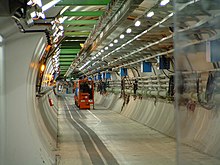
Geneva and the nearby French department of Ain co-host the world's largest laboratory, CERN,[181] dedicated to particle physics research. Another important research centre is the Paul Scherrer Institute.
Notable inventions include lysergic acid diethylamide (LSD), diazepam (Valium), the scanning tunnelling microscope (Nobel prize) and Velcro. Some technologies enabled the exploration of new worlds such as the pressurised balloon of Auguste Piccard and the Bathyscaphe which permitted Jacques Piccard to reach the deepest point of the world's oceans.
The Swiss Space Office has been involved in various space technologies and programmes. It was one of the 10 founders of the European Space Agency in 1975 and is the seventh largest contributor to the ESA budget. In the private sector, several companies participate in the space industry, such as Oerlikon Space[182] or Maxon Motors.[183]
Energy

Electricity generated in Switzerland is 56% from hydroelectricity and 39% from nuclear power, producing negligible CO2. On 18 May 2003, two anti-nuclear referendums were defeated: Moratorium Plus, aimed at forbidding the building of new nuclear power plants (41.6% supported),[184] and Electricity Without Nuclear (33.7% supported) after a moratorium expired in 2000.[185] After the Fukushima nuclear disaster, in 2011 the government announced plans to end the use of nuclear energy in the following 20 to 30 years.[186] In November 2016, Swiss voters rejected a Green Party referendum to accelerate the phaseout of nuclear power (45.8% supported).[187] The Swiss Federal Office of Energy (SFOE) is responsible for energy supply and energy use within the Federal Department of Environment, Transport, Energy and Communications (DETEC). The agency supports the 2000-watt society initiative to cut the nation's energy use by more than half by 2050.[188]
Transport

The densest rail network in Europe[60][failed verification] spans 5,250 kilometres (3,260 mi) and carries over 596 million passengers annually as of 2015.[189] In 2015, each Swiss resident travelled on average 2,550 kilometres (1,580 mi) by rail, more than any other European country.[189] Virtually 100% of the network is electrified. 60% of the network is operated by the Swiss Federal Railways (SBB CFF FFS). Besides the second largest standard gauge railway company, BLS AG, two railways companies operate on narrow gauge networks: the Rhaetian Railway (RhB) in Graubünden, which includes some World Heritage lines,[190] and the Matterhorn Gotthard Bahn (MGB), which co-operates with RhB the Glacier Express between Zermatt and St. Moritz/Davos. Switzerland operates the world's longest and deepest railway tunnel and the first flat, low-level route through the Alps, the 57.1-kilometre-long (35.5 mi) Gotthard Base Tunnel, the largest part of the New Railway Link through the Alps (NRLA) project.
Switzerland has a publicly managed, toll-free road network financed by highway permits as well as vehicle and petrol taxes. The Swiss autobahn/autoroute system requires the annual purchase of a vignette (toll sticker)—for 40 Swiss francs—to use its roadways, including passenger cars and trucks. The Swiss autobahn/autoroute network stretches for 1,638 km (1,018 mi) and has one of the highest motorway densities in the world.[191]
Zurich Airport is Switzerland's largest international flight gateway; it handled 22.8 million passengers in 2012.[192] The other international airports are Geneva Airport (13.9 million passengers in 2012),[193] EuroAirport Basel Mulhouse Freiburg (located in France), Bern Airport, Lugano Airport, St. Gallen-Altenrhein Airport and Sion Airport. Swiss International Air Lines is the flag carrier. Its main hub is Zurich, but it is legally domiciled in Basel.
Environment
Switzerland has one of the best environmental records among developed nations.[194] It is a signatory to the Kyoto Protocol. With Mexico and South Korea, it forms the Environmental Integrity Group (EIG).[195]
The country is active in recycling and anti-littering programs and is one of the world's top recyclers, recovering 66% to 96% of recyclable materials, varying across the country.[196] The 2014 Global Green Economy Index placed Switzerland among the top 10 green economies.[197]
Switzerland has an economic system for garbage disposal, which is based mostly on recycling and energy-producing incinerators.[198] As in other European countries, the illegal disposal of garbage is heavily fined. In almost all Swiss municipalities, mandatory stickers or dedicated garbage bags allow the identification of disposable garbage.[199]
Demographics
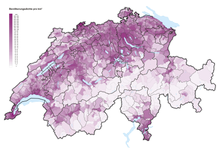
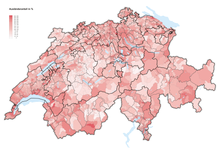
In common with other developed countries, the Swiss population increased rapidly during the industrial era, quadrupling between 1800 and 1990 and has continued to grow.
The population is about 9 million (2023 est.).[201] Population growth was projected into 2035, due mostly to immigration. Like most of Europe, Switzerland faces an ageing population, with a fertility rate close to replacement level.[202] Switzerland has one of the world's oldest populations, with an average age of 42.5 years.[203]
According to the World Factbook, ethnic groups in Switzerland are as follows: Swiss 69.2%, German 4.2%, Italian 3.2%, Portuguese 2.5%, French 2.1%, Kosovan 1.1%, Turkish 1%, other 16.7% (2020 est).[204] The Council of Europe figures suggest a population of around 30,000 Romani people in the country.[205]
Immigration
As of 2023, resident foreigners made up 26.3% of Switzerland's population.[14] Most of these (83%) were from European countries. Italy provided the largest single group of foreigners, providing 14.7% of total foreign population, followed closely by Germany (14.0%), Portugal (11.7%), France (6.6%), Kosovo (5.1%), Spain (3.9%), Turkey (3.1%), North Macedonia (3.1%), Serbia (2.8%), Austria (2.0%), United Kingdom (1.9%), Bosnia and Herzegovina (1.3%) and Croatia (1.3%). Immigrants from Sri Lanka (1.3%), most of them former Tamil refugees, were the largest group of Asian origin (7.9%).[206]
2021 figures show that 39.5% (compared to 34.7% in 2012) of the permanent resident population aged 15 or over (around 2.89 million), had an immigrant background. 38% of the population with an immigrant background (1.1 million) held Swiss citizenship.[207][208]
In the 2000s, domestic and international institutions expressed concern about what was perceived as an increase in xenophobia. In reply to one critical report, the Federal Council noted that "racism unfortunately is present in Switzerland", but stated that the high proportion of foreign citizens in the country, as well as the generally successful integration of foreigners, underlined Switzerland's openness.[209] A follow-up study conducted in 2018 reported that 59% considered racism a serious problem in Switzerland.[210] The proportion of the population that claimed to have been targeted by racial discrimination increased from 10% in 2014 to almost 17% in 2018, according to the Federal Statistical Office.[211]
Largest cities
| Rank | Name | Canton | Pop. | Rank | Name | Canton | Pop. | ||
|---|---|---|---|---|---|---|---|---|---|
 Zürich  Geneva | 1 | Zürich | Zürich | 421,878 | 11 | Thun | Bern | 43,476 |  Basel  Lausanne |
| 2 | Geneva | Geneva | 203,856 | 12 | Bellinzona | Ticino | 43,360 | ||
| 3 | Basel | Basel-Stadt | 178,120 | 13 | Köniz | Bern | 42,388 | ||
| 4 | Lausanne | Vaud | 140,202 | 14 | La Chaux-de-Fonds | Neuchâtel | 36,915 | ||
| 5 | Bern | Bern | 134,794 | 15 | Fribourg | Fribourg | 38,039 | ||
| 6 | Winterthur | Zürich | 114,220 | 16 | Schaffhausen | Schaffhausen | 36,952 | ||
| 7 | Lucerne | Luzern | 82,620 | 17 | Vernier | Geneva | 34,898 | ||
| 8 | St. Gallen | St. Gallen | 76,213 | 18 | Chur | Graubünden | 36,336 | ||
| 9 | Lugano | Ticino | 62,315 | 19 | Sion | Valais | 34,978 | ||
| 10 | Biel/Bienne | Bern | 55,206 | 20 | Uster | Zürich | 35,337 | ||
Languages
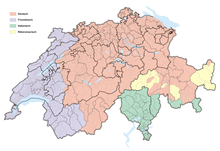
Switzerland has four national languages: mainly German (spoken natively by 62.8% of the population in 2016); French (22.9%) spoken natively in the west; and Italian (8.2%) spoken natively in the south.[214][213] The fourth national language, Romansh (0.5%), is a Romance language spoken locally in the southeastern trilingual canton of Grisons, and is designated by Article 4 of the Federal Constitution as a national language along with German, French, and Italian. In Article 70 it is mentioned as an official language if the authorities communicate with persons who speak Romansh. However, federal laws and other official acts do not need to be decreed in Romansh.
In 2016, the languages most spoken at home among permanent residents aged 15 and older were Swiss German (59.4%), French (23.5%), Standard German (10.6%), and Italian (8.5%). Other languages spoken at home included English (5.0%), Portuguese (3.8%), Albanian (3.0%), Spanish (2.6%) and Serbian and Croatian (2.5%). 6.9% reported speaking another language at home.[215] In 2014 almost two-thirds (64.4%) of the permanent resident population indicated speaking more than one language regularly.[216]
The federal government is obliged to communicate in the official languages, and in the federal parliament simultaneous translation is provided from and into German, French and Italian.[217]
Aside from the official forms of their respective languages, the four linguistic regions of Switzerland also have local dialectal forms. The role played by dialects in each linguistic region varies dramatically: in German-speaking regions, Swiss German dialects have become more prevalent since the second half of the 20th century, especially in the media, and are used as an everyday language for many, while the Swiss variety of Standard German is almost always used instead of dialect for written communication (c.f. diglossic usage of a language).[218] Conversely, in the French-speaking regions, local Franco-Provençal dialects have almost disappeared (only 6.3% of the population of Valais, 3.9% of Fribourg, and 3.1% of Jura still spoke dialects at the end of the 20th century), while in the Italian-speaking regions, the use of Lombard dialects is mostly limited to family settings and casual conversation.[218]
The principal official languages have terms not used outside of Switzerland, known as Helvetisms. German Helvetisms are, roughly speaking, a large group of words typical of Swiss Standard German that do not appear in Standard German, nor in other German dialects. These include terms from Switzerland's surrounding language cultures (German Billett[219] from French), from similar terms in another language (Italian azione used not only as act but also as discount from German Aktion).[220] Swiss French, while generally close to the French of France, also contains some Helvetisms. The most frequent characteristics of Helvetisms are in vocabulary, phrases, and pronunciation, although certain Helvetisms denote themselves as special in syntax and orthography. Duden, the comprehensive German dictionary, contains about 3000 Helvetisms.[220] Current French dictionaries, such as the Petit Larousse, include several hundred Helvetisms; notably, Swiss French uses different terms than that of France for the numbers 70 (septante) and 90 (nonante) and often 80 (huitante) as well.[221]
Learning one of the other national languages is compulsory for all Swiss pupils, hence many Swiss are supposed to be at least bilingual, especially those belonging to linguistic minority groups.[222] Because the largest part of Switzerland is German-speaking, many French, Italian, and Romansh speakers migrating to the rest of Switzerland and the children of those non-German-speaking Swiss born within the rest of Switzerland speak German. While learning one of the other national languages at school is important, most Swiss learn English to communicate with Swiss speakers of other languages, as it is perceived as a neutral means of communication. English often functions as the de facto lingua franca.[223]
Health
Swiss residents are required to buy health insurance from private insurance companies, which in turn are required to accept every applicant. While the cost of the system is among the highest, its health outcomes compare well with other European countries; patients have been reported as in general, highly satisfied with it.[224][225][226] In 2012, life expectancy at birth was 80.4 years for men and 84.7 years for women[227] – the world's highest.[228][229] However, spending on health at 11.4% of GDP (2010) is on par with Germany and France (11.6%) and other European countries, but notably less than the US (17.6%).[230] From 1990, costs steadily increased.[231]
It is estimated that one out of six Swiss persons suffers from mental illness.[232]
According to a survey conducted by Addiction Switzerland, fourteen per cent of men and 6.5% of women between 20 and 24 reported consuming cannabis in the past 30 days in 2020, and 4 Swiss cities were listed among the top 10 European cities for cocaine use as measured in wastewater, down from 5 in 2018.[233][234]
Culture
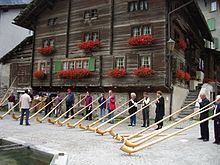
Swiss culture is characterised by diversity, which is reflected in diverse traditional customs.[235] A region may be in some ways culturally connected to the neighbouring country that shares its language, all rooted in western European culture.[236] The linguistically isolated Romansh culture in Graubünden in eastern Switzerland constitutes an exception. It survives only in the upper valleys of the Rhine and the Inn and strives to maintain its rare linguistic tradition.
Switzerland is home to notable contributors to literature, art, architecture, music and sciences. In addition, the country attracted creatives during times of unrest or war.[237] Some 1000 museums are found in the country.[235]
Among the most important cultural performances held annually are the Paléo Festival, Lucerne Festival,[238] the Montreux Jazz Festival,[239] the Locarno International Film Festival and Art Basel.[240]
Alpine symbolism played an essential role in shaping Swiss history and the Swiss national identity.[23][241] Many alpine areas and ski resorts attract visitors for winter sports as well as hiking and mountain biking in summer. The quieter seasons are spring and autumn. A traditional pastoral culture predominates in many areas, and small farms are omnipresent in rural areas. Folk art is nurtured in organisations across the country. Switzerland most directly in appears in music, dance, poetry, wood carving, and embroidery. The alphorn, a trumpet-like musical instrument made of wood has joined yodeling and the accordion as epitomes of traditional Swiss music.[242][243]
Religion
Religion in Switzerland (age 15+, 2018–2020):[244][n]
Christianity is the predominant religion according to national surveys of Swiss Federal Statistical Office[n] (about 67% of resident population in 2016–2018[246] and 75% of Swiss citizens[247]), divided between the Catholic Church (35.8% of the population), the Swiss Reformed Church (23.8%), further Protestant churches (2.2%), Eastern Orthodoxy (2.5%), and other Christian denominations (2.2%).[246]
Switzerland has no official state religion, though most of the cantons (except Geneva and Neuchâtel) recognise official churches, either the Catholic Church or the Swiss Reformed Church. These churches, and in some cantons the Old Catholic Church and Jewish congregations, are financed by official taxation of members.[248] In 2020, the Roman Catholic Church had 3,048,475 registered and church tax paying members (corresponding to 35.2% of the total population), while the Swiss Reformed Church had 2,015,816 members (23.3% of the total population).[249][o]
26.3% of Swiss permanent residents are not affiliated with a religious community.[246]
As of 2020, according to a national survey conducted by the Swiss Federal Statistical Office,[n] Christian minority communities included Neo-Pietism (0.5%), Pentecostalism (0.4%, mostly incorporated in the Schweizer Pfingstmission), Apostolic communities (0.3%), other Protestant denominations (1.1%, including Methodism), the Old Catholic Church (0.1%), other Christian denominations (0.3%). Non-Christian religions are Islam (5.3%),[246] Hinduism (0.6%), Buddhism (0.5%), Judaism (0.25%) and others (0.4%).[244]
Historically, the country was about evenly balanced between Catholic and Protestant, in a complex patchwork. During the Reformation Switzerland became home to many reformers. Geneva converted to Protestantism in 1536, just before John Calvin arrived. In 1541, he founded the Republic of Geneva on his own ideals. It became known internationally as the Protestant Rome and housed such reformers as Theodore Beza, William Farel or Pierre Viret. Zurich became another reform stronghold around the same time, with Huldrych Zwingli and Heinrich Bullinger taking the lead. Anabaptists Felix Manz and Conrad Grebel also operated there. They were later joined by the fleeing Peter Martyr Vermigli and Hans Denck. Other centres included Basel (Andreas Karlstadt and Johannes Oecolampadius), Bern (Berchtold Haller and Niklaus Manuel), and St. Gallen (Joachim Vadian). One canton, Appenzell, was officially divided into Catholic and Protestant sections in 1597. The larger cities and their cantons (Bern, Geneva, Lausanne, Zurich and Basel) used to be predominantly Protestant. Central Switzerland, the Valais, the Ticino, Appenzell Innerrhodes, the Jura, and Fribourg are traditionally Catholic.
The Swiss Constitution of 1848, under the recent impression of the clashes of Catholic vs Protestant cantons that culminated in the Sonderbundskrieg, consciously defines a consociational state, allowing the peaceful co-existence of Catholics and Protestants.[citation needed] A 1980 initiative calling for the complete separation of church and state was rejected by 78.9% of the voters.[250] Some traditionally Protestant cantons and cities nowadays have a slight Catholic majority, because since about 1970 a steadily growing minority were not affiliated with any religious body (21.4% in Switzerland, 2012) especially in traditionally Protestant regions, such as Basel-City (42%), canton of Neuchâtel (38%), canton of Geneva (35%), canton of Vaud (26%), or Zurich city (city: >25%; canton: 23%).[251]
Literature

The earliest forms of literature were in German, reflecting the language's early predominance. In the 18th century, French became fashionable in Bern and elsewhere, while the influence of the French-speaking allies and subject lands increased.[252]
Among the classic authors of Swiss literature are Jeremias Gotthelf (1797–1854) and Gottfried Keller (1819–1890); later writers are Max Frisch (1911–1991) and Friedrich Dürrenmatt (1921–1990), whose Das Versprechen (The Pledge) was released as a Hollywood film in 2001.[253]
Famous French-speaking writers were Jean-Jacques Rousseau (1712–1778) and Germaine de Staël (1766–1817). More recent authors include Charles Ferdinand Ramuz (1878–1947), whose novels describe the lives of peasants and mountain dwellers, set in a harsh environment, and Blaise Cendrars (born Frédéric Sauser, 1887–1961).[253] Italian and Romansh-speaking authors also contributed to the Swiss literary landscape, generally in proportion to their number.
Probably the most famous Swiss literary creation, Heidi, the story of an orphan girl who lives with her grandfather in the Alps, is one of the most popular children's books and has come to be a symbol of Switzerland. Her creator, Johanna Spyri (1827–1901), wrote a number of books on similar themes.[253]
Media
This section needs additional citations for verification. (February 2024) |
Freedom of the press and the right to free expression is guaranteed in the constitution.[254] The Swiss News Agency (SNA) broadcasts information in three of the four national languages—on politics, economics, society and culture. The SNA supplies almost all Swiss media and foreign media with its reporting.[254]
In Switzerland, the most influential newspapers include the German-language Tages-Anzeiger and Neue Zürcher Zeitung, as well as the French-language Le Temps. Additionally, almost every city has at least one local newspaper published in the predominant local language. [255][256]
The government exerts greater control over broadcast media than print media, especially due to financing and licensing.[citation needed] The Swiss Broadcasting Corporation, whose name was recently changed to SRG SSR, is charged with the production and distribution of radio and television content. SRG SSR studios are distributed across the various language regions. Radio content is produced in six central and four regional studios while video media are produced in Geneva, Zurich, Basel, and Lugano. An extensive cable network allows most Swiss to access content from neighbouring countries.[citation needed]
Sports
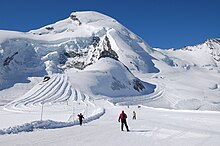
Skiing, snowboarding and mountaineering are among the most popular sports, reflecting the nature of the country[257] Winter sports are practised by natives and visitors. The bobsleigh was invented in St. Moritz.[258] The first world ski championships were held in Mürren (1931) and St. Moritz (1934). The latter town hosted the second Winter Olympic Games in 1928 and the fifth edition in 1948. Among its most successful skiers and world champions are Pirmin Zurbriggen and Didier Cuche.
The most prominently watched sports in Switzerland are football and ice hockey.[259]
The headquarters of the international football's and ice hockey's governing bodies, the International Federation of Association Football (FIFA) and International Ice Hockey Federation (IIHF) are located in Zurich. Many other headquarters of international sports federations are located in Switzerland. For example, the International Olympic Committee (IOC), IOC's Olympic Museum and the Court of Arbitration for Sport (CAS) are located in Lausanne.
Switzerland hosted the 1954 FIFA World Cup and was the joint host, with Austria, of the UEFA Euro 2008 tournament. The Swiss Super League is the nation's professional football club league. Europe's highest football pitch, at 2,000 metres (6,600 ft) above sea level, is located in Switzerland, the Ottmar Hitzfeld Stadium.[260]
Many Swiss follow ice hockey and support one of the 12 teams of the National League, which is the most attended league in Europe.[261] In 2009, Switzerland hosted the IIHF World Championship for the tenth time.[262] It also became World Vice-Champion in 2013 and 2018. Its numerous lakes make Switzerland an attractive sailing destination. The largest, Lake Geneva, is the home of the sailing team Alinghi which was the first European team to win the America's Cup in 2003 and which successfully defended the title in 2007.

Swiss tennis player Roger Federer is widely regarded as among the sport's greatest players. He won 20 Grand Slam tournaments overall including a record 8 Wimbledon titles. He won a joint-record 6 ATP Finals.[264] He was ranked no. 1 in the ATP rankings for a record 237 consecutive weeks. He ended 2004, 2005, 2006, 2007 and 2009 ranked no. 1. Fellow Swiss players Martina Hingis and Stan Wawrinka also hold multiple Grand Slam titles. Switzerland won the Davis Cup title in 2014.
Motorsport racecourses and events were banned in Switzerland following the 1955 Le Mans disaster with exceptions for events such as hillclimbing. The country continued to produce successful racing drivers such as Clay Regazzoni, Sébastien Buemi, Jo Siffert, Dominique Aegerter, successful World Touring Car Championship driver Alain Menu, 2014 24 Hours of Le Mans winner Marcel Fässler and 2015 24 Hours Nürburgring winner Nico Müller. Switzerland also won the A1GP World Cup of Motorsport in 2007–08 with driver Neel Jani. Swiss motorcycle racer Thomas Lüthi won the 2005 MotoGP World Championship in the 125cc category. In June 2007 the Swiss National Council, one house of the Federal Assembly of Switzerland, voted to overturn the ban, however the other house, the Swiss Council of States rejected the change and the ban remains in place.[265][266]
Traditional sports include Swiss wrestling or Schwingen, a tradition from the rural central cantons and considered the national sport by some. Hornussen is another indigenous Swiss sport, which is like a cross between baseball and golf.[267] Steinstossen is the Swiss variant of stone put, a competition in throwing a heavy stone. Practised only among the alpine population since prehistoric times, it is recorded to have taken place in Basel in the 13th century. It is central to the Unspunnenfest, first held in 1805, with its symbol the 83.5 stone named Unspunnenstein.[268]
Cuisine

The cuisine is multifaceted. While dishes such as fondue, raclette or rösti are omnipresent, each region developed its gastronomy according to the varieties of climate and language, for example, Zürcher Geschnetzeltes, engl.: sliced meat Zurich style.[269] Traditional Swiss cuisine uses ingredients similar to those in other European countries, as well as unique dairy products and cheeses such as Gruyère or Emmental, produced in the valleys of Gruyères and Emmental. The number of fine-dining establishments is high, particularly in western Switzerland.[270][271]
Шоколад производят в Швейцарии с 18 века. Его репутация выросла в конце 19 века с изобретением современных методов, таких как конширование и темперирование , которые обеспечили более высокое качество. Еще одним прорывом стало изобретение твердого молочного шоколада в 1875 году Дэниелом Питером . Швейцарцы являются крупнейшими потребителями шоколада в мире. [272] [273]
Самый популярный алкогольный напиток – вино. Швейцария отличается разнообразием сортов винограда, что отражает большие различия в терруарах . Швейцарское вино производится в основном в Вале , Во ( Лаво ), Женеве и Тичино, с небольшим большинством белых вин. Виноградники в Швейцарии культивируются со времен Римской империи, хотя можно найти следы и более древнего происхождения. Наиболее распространенными сортами являются Шассала (называемая в Вале Фендан ) и Пино Нуар . Мерло — основной сорт, производимый в Тичино. [274] [275]
См. также
Примечания
- ^ Jump up to: а б Берн называют «федеральным городом» (немецкий: Bundesstadt ; французский: ville fédérale ; итальянский: città Federale ; ретороманский: citad Federala ). Швейцарское законодательство не определяет столицу как таковую, но федеральный парламент и правительство расположены в Берне, в то время как другие федеральные учреждения, такие как федеральные суды, находятся в других городах ( Беллинцона , Лозанна , Люцерн , Невшатель , Санкт-Галлен и др.). .
- ^ Традиционная дата. Первоначальная дата Рютлийской клятвы — 1307 год (о ней сообщил Эгидий Чуди в 16 веке) и является лишь одним из нескольких сопоставимых договоров между более или менее одинаковыми сторонами в этот период. Дата Федеральной хартии 1291 года была выбрана в 1891 году для официального празднования «600-летия Конфедерации».
- ^ Торжественная декларация Тагацунга провозгласила Федеральную конституцию принятой 12 сентября 1848 года. В резолюции Тагацунга от 14 сентября 1848 года указывалось, что полномочия учреждений, предусмотренных Федеральным договором 1815 года, истекают во время конституции Тагацунга. Федеральный совет , состоявшийся 16 ноября 1848 года.
- ^ Существует несколько определений. См. Географию Швейцарии#Западная или Центральная Европа .
- ^ Аудио произношение: , .
- ^ Швейцарское стандартное немецкое правописание и произношение. Швейцарско -немецкое имя иногда пишется как Schwyz или Schwiiz , произносится как [ˈʃʋiːts] . Швиц также является стандартным немецким (и международным) названием одного из швейцарских кантонов.
- ^ Последнее является обычным произношением Сурсильвана .
- ↑ Ранее Христианско-демократическая народная партия (CVP/PCD), которая в 2019 году объединилась с партией БДП и образовала Центристскую партию.
- ^ С 1999 года инициатива также может иметь форму общего предложения, которое должно быть разработано парламентом. Тем не менее, поскольку по разным причинам эта инициатива считается менее привлекательной, ее еще предстоит использовать.
- ^ Это большинство в 23 кантональных голоса, поскольку результат всенародного голосования в шести традиционных полукантонах каждый считается как половина голосов одного из других кантонов.
- ^ Предположение, сделанное в исследовании: одна треть акций «не распределяется» и распределена поровну между текущими регионами.
- ^ В 2008 году ETH Zurich занял 15-е место в области естественных наук и математики в Шанхайском академическом рейтинге университетов мира , а EPFL в Лозанне занял 18-е место в области инженерии / технологий и компьютерных наук в том же рейтинге.
- ^ Включены Нобелевские премии в ненаучных категориях.
- ^ Jump up to: а б с С 2010 года статистика религиозной принадлежности в Швейцарии, предоставляемая Федеральным статистическим управлением Швейцарии, основана на национальном структурном обследовании 200 000 человек в возрасте 15 лет и старше (что соответствует 2,5% от общей численности постоянного населения). Данные экстраполируются для получения статистических результатов для всего населения (в возрасте 15 лет и старше). Эти результаты представляют собой оценки с некоторой степенью неопределенности, обозначенной доверительным интервалом , но путем объединения выборок (объединения) за несколько лет можно получить более точные результаты, включая общее количество протестантов и информацию о религиозных меньшинствах. Примечание. Данные структурного исследования не полностью сопоставимы с данными, собранными до 2010 года на основе данных переписи населения (с учетом каждого человека, живущего в Швейцарии) или с годовым официальным количеством членов церкви. [245]
- ^ Точная статистика о членстве в церквях среди всего населения Швейцарии доступна только для официально зарегистрированных и платящих церковный налог членов Католической церкви Швейцарии и Протестантской церкви Швейцарии ( Ландескирхен ).
Ссылки
- ^ Jump up to: а б с д Георг Крайс: Город федерального значения на немецком , французском и итальянском языках в онлайн- историческом словаре Швейцарии , 20 марта 2015 г.
- ^ Jump up to: а б Холенштейн, Андре (2012). «Столицы не существует». UniPress – Исследования и наука в Бернском университете (научная статья) (на немецком языке). 152 (особый случай столичного региона). Берн: Департамент коммуникации Бернского университета : 16–19. дои : 10.7892/boris.41280 . S2CID 178237847 .
Когда в 1848 году нужно было определить политико-административный центр нового федерального государства, отцы конституции воздержались от назначения столицы Швейцарии и вместо этого сформулировали в статье 108: «Все, что относится к месту пребывания федеральных властей, является предметом федеральное законодательство». Таким образом, федеральный город является не чем иным, как резиденцией федеральных властей.
[В 1848 году, когда определялся политический и административный центр новой федерации, создатели конституции воздержались от назначения столицы Швейцарии и вместо этого сформулировали в статье 108: «Все, что относится к месту пребывания властей, является предмет федерального законодательства». Таким образом, федеральный город является не более и не менее резиденцией федеральных властей.] - ^ «Религия» (официальная статистика: возраст населения 15+, период наблюдения 2022 г.). Федеральное статистическое управление Швейцарии . Архивировано из оригинала 24 апреля 2020 года . Проверено 30 мая 2020 г.
- ^ Шугарт, Мэтью Соберг (декабрь 2005 г.). «Полупрезидентские системы: модели двойной исполнительной и смешанной власти» . Французская политика . 3 (3): 323–351. дои : 10.1057/palgrave.fp.8200087 . ISSN 1476-3419 . S2CID 73642272 .
- ^ Элджи, Роберт (2016). «Государственные системы, партийная политика и институциональная инженерия в раунде». Инсайт Турция . 18 (4): 79–92. ISSN 1302-177X . JSTOR 26300453 .
- ^ Клей, Андреас: Федеральная конституция на немецком , французском и итальянском языках в онлайн- историческом словаре Швейцарии , 3 мая 2011 г.
- ^ «Поверхностные воды и изменение поверхностных вод» . Организация экономического сотрудничества и развития (ОЭСР). Архивировано из оригинала 24 марта 2021 года . Проверено 11 октября 2020 г.
- ^ «Состояние населения на конец 2 квартала 2023 года | Федеральное статистическое управление» . 20 сентября 2023 года. Архивировано из оригинала 20 сентября 2023 года . Проверено 20 сентября 2023 г.
- ^ Жаклин Кучера; Афина Крумменахер, ред. (22 ноября 2016 г.). Население Швейцарии в 2015 г. (PDF) (Отчет). Швейцарская статистика. Невшатель, Швейцария: Федеральное статистическое управление Швейцарии (FSO), Швейцарская Конфедерация. Архивировано из оригинала 20 декабря 2016 года . Проверено 7 декабря 2016 г.
- ^ Jump up to: а б с д «База данных «Перспективы мировой экономики», издание за апрель 2024 г. (Швейцария)» . www.imf.org . Международный валютный фонд . 16 апреля 2024 года. Архивировано из оригинала 28 июня 2024 года . Проверено 16 апреля 2024 г.
- ^ «Коэффициент Джини эквивалентного располагаемого дохода – исследование EU-SILC» . ec.europa.eu . Евростат . Архивировано из оригинала 9 октября 2020 года . Проверено 31 марта 2024 г.
- ^ «Отчет о человеческом развитии 2023/2024» (PDF) . Программа развития ООН . 13 марта 2024 г. Архивировано (PDF) из оригинала 13 марта 2024 г. . Проверено 13 марта 2024 г.
- ^ Бернер, Элизабет Кей; Бернер, Роберт А. (22 апреля 2012 г.). Глобальная окружающая среда: водные, воздушные и геохимические циклы – второе издание . Издательство Принстонского университета. ISBN 978-1-4008-4276-6 . Архивировано из оригинала 22 сентября 2023 года . Проверено 23 августа 2020 г. .
- ^ Jump up to: а б «BFS: 9 миллионов человек в Швейцарии – 20 минут» . 20 сентября 2023 года. Архивировано из оригинала 22 сентября 2023 года . Проверено 20 сентября 2023 г.
- ^ Томас Фляйнер; Александр Мисич; Николь Тёппервин (5 августа 2005 г.). Конституционное право Швейцарии . Клювер Лоу Интернэшнл. п. 28. ISBN 978-90-411-2404-3 . Архивировано из оригинала 12 апреля 2023 года . Проверено 25 июля 2023 г.
- ^ «Справочник мирового благосостояния за 2019 год» (PDF) . Кредит Свисс . Архивировано из оригинала (PDF) 23 октября 2019 года . Проверено 17 июня 2020 г. В архиве. Данные по стране взяты из Таблицы 3.1 на стр. 117. Данные по региону взяты из конца этой таблицы на стр. 120.
- ^ Гош, Субир (9 октября 2010 г.). «США по-прежнему остаются самой богатой страной, а Китай – самым быстрорастущим» . Цифровой журнал . Архивировано из оригинала 12 января 2016 года . Проверено 14 декабря 2015 г.
- ^ Бауэрс, Саймон (19 октября 2011 г.). «Рост франка выводит Швейцарию на первое место в списке богатых людей» . Хранитель . Лондон. Архивировано из оригинала 12 января 2016 года . Проверено 14 декабря 2015 г.
- ^ Бахманн, Хелена (23 марта 2018 г.). «Ищете лучшее качество жизни? Посетите эти три швейцарских города» . США сегодня . Архивировано из оригинала 9 ноября 2020 года . Проверено 14 января 2021 г.
- ^ Тейлор, Хлоя (20 мая 2019 г.). «По мнению Deutsche Bank, эти города предлагают лучшее качество жизни в мире» . CNBC. Архивировано из оригинала 23 июня 2019 года . Проверено 14 января 2021 г.
- ^ «Коронавирус: Париж и Цюрих стали самыми дорогими для жизни городами мира из-за COVID-19» . Евроньюс. 18 ноября 2020 года. Архивировано из оригинала 12 декабря 2020 года . Проверено 14 января 2021 г.
- ^ Ваттер, Адриан (2014). Политическая Швейцарии система Курс политологии (на немецком языке). Баден-Баден: УТБ Верлаг. ISBN 978-3-8252-4011-0 . Архивировано из оригинала 22 декабря 2015 года . Проверено 20 декабря 2015 г.
- ^ Jump up to: а б Циммер, Оливер (12 января 2004 г.) [первоначально опубликовано: октябрь 1998 г.]. «В поисках естественной идентичности: альпийский ландшафт и реконструкция швейцарской нации». Сравнительные исследования в обществе и истории . 40 (4). Лондон: 637–665. doi : 10.1017/S0010417598001686 (неактивен с 1 августа 2024 г.). S2CID 146259022 .
{{cite journal}}: CS1 maint: DOI неактивен по состоянию на август 2024 г. ( ссылка ) - ^ Ланг, Йозеф (14 декабря 2015 г.). «Альпы как идеология» . Tages-Anzeiger (на немецком языке). Цюрих, Швейцария. Архивировано из оригинала 15 декабря 2015 года . Проверено 14 декабря 2015 г.
- ^ Шмок, Нико (30 января 2019 г.). Швейцария как «нация воли»? Основные элементы швейцарского самосознания (на немецком языке). Издательство ГРИН. ISBN 978-3-668-87199-1 . Архивировано из оригинала 22 января 2023 года . Проверено 4 июня 2022 г.
- ^ «швейцарский | Этимология, происхождение и значение слова швейцарский по этимонлине» . www.etymonline.com . Архивировано из оригинала 30 апреля 2011 года . Проверено 15 сентября 2022 г.
- ^ Комната, Адриан (2003). Топонимы мира: происхождение и значение названий более 5000 природных объектов, стран, столиц, территорий, городов и исторических мест . Джефферсон, Северная Каролина: МакФарланд. ISBN 978-0-7864-1814-5 . OCLC 54385937 .
- ^ «Швейцария» . Католическая энциклопедия . Новый Адвент. Архивировано из оригинала 22 января 2010 года . Проверено 15 сентября 2022 г.
- ^ «О швицерах, швейцарцах и гельветах» . админ.ч . Архивировано из оригинала 5 августа 2010 года.
- ^ «Züritütsch, швейцарский немецкий» (PDF) . Swissdeutsch.ch . п. 2. Архивировано из оригинала (PDF) 12 января 2016 года . Проверено 26 января 2010 г.
- ^ «Кантон Швиц: Краткий исторический обзор» . сз.ч. Архивировано из оригинала 15 августа 2016 года . Проверено 26 января 2010 г.
- ^ «Confoederatio Helvetica (CH)» . hls-dhs-dss.ch (на немецком языке). Архивировано из оригинала 27 сентября 2015 года . Проверено 15 сентября 2022 г. , Исторический лексикон Швейцарии.
- ^ Гельвеция на немецком , французском и итальянском языках в онлайн- историческом словаре Швейцарии .
- ^ Jump up to: а б с д и ж г час «История» . Swissworld.org . Архивировано из оригинала 19 апреля 2010 года . Проверено 27 июня 2009 г.
- ^ «Римское наследие Швейцарии оживает» . Swissinfo.ch . 11 сентября 2005 г. Архивировано из оригинала 15 сентября 2022 г. Проверено 15 сентября 2022 г.
- ^ Трумм, Джудит. «Виндонисса» . Исторический словарь Швейцарии (на немецком языке). Архивировано из оригинала 3 мая 2022 года . Проверено 3 мая 2022 г.
- ^ Jump up to: а б с д «История Швейцарии» . Энциклопедия наций . Архивировано из оригинала 1 марта 2014 года . Проверено 27 ноября 2009 г.
- ^ Jump up to: а б с д и ж г «Краткая история Швейцарии» . Нации онлайн . Архивировано из оригинала 8 мая 2014 года . Проверено 27 ноября 2009 г.
- ^ Греаниас, Томас (2004). История Швейцарии и швейцарцев . Базель: Швабия. ISBN 978-3-7965-2067-9 . ОСЛК 255970548 .
- ^ Jump up to: а б с д и ж г час я дж к «Краткий обзор истории Швейцарии» . Федеральный департамент иностранных дел. Архивировано из оригинала 26 июня 2009 года . Проверено 22 июня 2009 г.
- ^ «Der Basler Bundesbrief, от 9 июня 1501 г.» (PDF) . Архивировано (PDF) из оригинала 14 мая 2022 года . Проверено 3 мая 2022 г.
- ^ Э.Хофер, Роланд. «Шаффхаузен (Кантон)» . Исторический словарь Швейцарии (на немецком языке). Архивировано из оригинала 3 мая 2022 года . Проверено 3 мая 2022 г.
- ^ Линдер, Вольф; Ваттер, Адриан (2001). «Институты и результаты швейцарского федерализма: роль кантонов в швейцарской политике» . Западноевропейская политика . 24 (2): 95. дои : 10.1080/01402380108425435 . ISSN 0140-2382 . Архивировано из оригинала 22 июня 2023 года . Проверено 11 июня 2024 г.
- ^ Швейцарская граница («Основные исправления после 1815 года касаются долины Дапп в 1862 году (граница Во-Франция, около 7,5 км2), Валле-ди-Лей в 1952 году (Граубюнден-Италия, 0,45 км2), Л'Эльхорна в 1955 году (холм на которые претендует Швейцария по военным причинам, Граубюнден-Лихтенштейн) и немецкий анклав Веренахоф в кантоне Шаффхаузен в 1967 году.") на немецком , французском и итальянском языках в онлайн -историческом словаре Швейцарии . Следует отметить, что в долине ди Лей Италия получила взамен территорию той же площади. См. здесь. Архивировано 21 мая 2014 г. в Wayback Machine.
- ^ «Благородство в Швейцарии» . Архивировано из оригинала 3 марта 2016 года . Проверено 22 октября 2015 г.
- ^ «WIR, дополнительная швейцарская валюта с 1934 года» . Экономический журнал . Архивировано из оригинала 12 июня 2021 года . Проверено 12 июня 2021 г.
- ^ Дюкрест, Жан Пьер; Доранд, Мишель (1987). История Швейцарии . Издания Франьер. OCLC 702317703 .
- ^ «Ленин и швейцарская нереволюция» . SWI swissinfo.ch . 19 мая 2006 г. Архивировано из оригинала 8 февраля 2023 г. Проверено 8 февраля 2023 г.
- ^ Jump up to: а б ван Гиннекен, Аник Х.М. (2006). Исторический словарь Лиги Наций . Пугало Пресс . п. 182. ИСБН 9780810865136 .
- ^ Урнер, Клаус (2002). «Проглотим Швейцарию»: Планы Гитлера против Швейцарской Конфедерации . Лэнхэм, Мэриленд: Lexington Books. стр. 4, 7. ISBN 978-0-7391-0255-8 . OCLC 46472272 .
- ^ Jump up to: а б с д и «Краткий обзор истории Швейцарии» . админ.ч. Архивировано из оригинала 26 июня 2009 года . Проверено 22 июня 2009 г.
- ^ Jump up to: а б с «Рецензия на книгу: Хэлбрук, Стивен П. Цель Швейцария: вооруженный нейтралитет Швейцарии во Второй мировой войне . Роквилл-центр, Нью-Йорк: Сарпедон, 1998» . Камень и камень . Архивировано из оригинала 1 декабря 2009 года . Проверено 2 декабря 2009 г.
- ^ Jump up to: а б Убежище на немецком , французском и итальянском языках в онлайн- историческом словаре Швейцарии .
- ^ Jump up to: а б с д Итоговый отчет Независимой комиссии экспертов Швейцарии (PDF) . Цюрих: Pendo Verlag. 2002. ISBN 978-3-85842-603-1 . Архивировано (PDF) из оригинала 30 мая 2009 г.
- ^ Хельмрайх, Дж.Э. «Дипломатия извинений» . Архивировано из оригинала 5 мая 2007 года . Проверено 5 мая 2007 г.
- ^ «Государства, ранее обладавшие ядерным оружием или преследовавшие его» . Архивировано из оригинала 26 января 2015 года . Проверено 6 марта 2014 г.
- ^ Фишер, Патрик (8 апреля 2019 г.). «Когда Швейцария хотела иметь ядерную бомбу» . Швейцарский национальный музей (на немецком языке). Архивировано из оригинала 11 мая 2022 года . Проверено 3 мая 2022 г.
- ^ Вийомье, Мари (15 октября 2018 г.). «Институт Пола Шеррера на службе науки уже 30 лет» . Swissinfo (на немецком языке). Архивировано из оригинала 3 мая 2022 года . Проверено 3 мая 2022 г.
- ^ Вестберг, Гуннар (9 октября 2010 г.). «Швейцарская ядерная бомба» . Международные врачи за предотвращение ядерной войны . Архивировано из оригинала 5 марта 2014 года . Проверено 6 марта 2014 г.
- ^ Jump up to: а б с «Профиль страны: Швейцария» . Министерство иностранных дел и по делам Содружества . 19 октября 2012 года. Архивировано из оригинала 16 января 2013 года . Проверено 8 февраля 2023 г.
- ^ «Парламентские права» . www.parlament.ch . Архивировано из оригинала 3 мая 2022 года . Проверено 3 мая 2022 г.
- ^ Хенли, Джон (25 сентября 2020 г.). «Швейцария проголосует за прекращение соглашения о свободе передвижения с ЕС» . Хранитель . Архивировано из оригинала 25 сентября 2020 года . Проверено 25 сентября 2020 г.
- ^ Хазан, Дэвид (27 сентября 2020 г.). «Большое большинство швейцарцев отвергают предложение обуздать иммиграцию из ЕС, - говорится в опросе на экзитполе» . Телеграф . Архивировано из оригинала 10 января 2022 года . Проверено 27 сентября 2020 г.
- ^ «Голоса - Индикаторы, Голосование 9 февраля 2014 г.: Инициатива против массовой иммиграции» ( на немецком и французском языках). Федеральное статистическое управление Швейцарии, Невшатель, 2014. 9 февраля 2014. Архивировано из оригинала 21 апреля 2014 года . Проверено 20 апреля 2014 г.
- ^ Морис, Эрик (22 декабря 2016 г.). «ЕС и Швейцария договорились о свободном передвижении» . EUobserver . Архивировано из оригинала 8 февраля 2023 года . Проверено 8 февраля 2023 г.
- ^ «Референдум в Швейцарии: избиратели отвергают прекращение свободного передвижения с ЕС» . Новости Би-би-си . 27 сентября 2020 г. Архивировано из оригинала 28 сентября 2020 г. . Проверено 8 февраля 2023 г.
- ^ Jump up to: а б с д и «Швейцарская география» . Swissworld.org . Присутствие Швейцарии, Федеральный департамент иностранных дел. Архивировано из оригинала 8 октября 2014 года . Проверено 12 октября 2014 г.
- ^ «Галерея карт Швейцарии: Физическая география Швейцарии» . Невшатель, Швейцария: Федеральное статистическое управление Швейцарии. Архивировано из оригинала 13 октября 2014 года . Проверено 12 октября 2014 г.
- ↑ Анклавы мира. Архивировано 18 сентября 2009 г. на сайте Wayback Machine enclaves.webs.com. Проверено 15 декабря 2009 г.
- ^ Jump up to: а б «Швейцарский климат» . Швейцарское федеральное управление метеорологии и климатологии MeteoSwiss, Швейцарский федеральный департамент внутренних дел (FDHA), Швейцарская Конфедерация. Архивировано из оригинала 29 июня 2007 года . Проверено 12 октября 2014 г.
- ^ Jump up to: а б «Климатические карты Швейцарии» . Швейцарское федеральное управление метеорологии и климатологии MeteoSwiss, Швейцарский федеральный департамент внутренних дел (FDHA), Швейцарская Конфедерация. Архивировано из оригинала 23 февраля 2010 года . Проверено 12 октября 2014 г.
- ^ Динерштейн, Эрик; и др. (2017). «Экорегиональный подход к защите половины земного мира» . Бионаука . 67 (6): 534–545. дои : 10.1093/biosci/bix014 . ISSN 0006-3568 . ПМК 5451287 . ПМИД 28608869 .
- ^ «Окружающая среда: Влияние изменения климата» . Swissworld.org . Присутствие Швейцарии, Федеральный департамент иностранных дел. Архивировано из оригинала 15 ноября 2014 года . Проверено 12 октября 2014 г.
- ^ «Индекс экологической эффективности 2014» . epi.yale.edu/epi . Йельский центр экологического права и политики Йельского университета и Центр международной информационной сети по наукам о Земле Колумбийского университета. 2014. Архивировано из оригинала 29 января 2014 года . Проверено 12 октября 2014 г.
- ^ «Результаты РПИ 2020» . Индекс экологической эффективности . 3 июня 2020 года. Архивировано из оригинала 3 сентября 2021 года . Проверено 20 ноября 2020 г.
- ^ Фаранд, Хлоя (25 февраля 2020 г.). «Швейцария подтверждает ООН климатический план до 2030 года и работает над достижением цели «чистого нуля» к 2050 году» . Домашние новости климата. Архивировано из оригинала 24 ноября 2020 года . Проверено 20 ноября 2020 г.
- ^ Jump up to: а б «Страновые тенденции» . Глобальная сеть следа. Архивировано из оригинала 8 августа 2017 года . Проверено 17 октября 2019 г.
- ^ Грэнтэм, HS; и др. (2020). «Антропогенная модификация лесов означает, что только 40% оставшихся лесов имеют высокую целостность экосистемы – Дополнительный материал» . Природные коммуникации . 11 (1): 5978. Бибкод : 2020NatCo..11.5978G . дои : 10.1038/s41467-020-19493-3 . ISSN 2041-1723 . ПМЦ 7723057 . ПМИД 33293507 .
- ^ «Население – факты и цифры» . Федеральный департамент иностранных дел . Архивировано из оригинала 17 апреля 2023 года . Проверено 17 марта 2023 г.
- ^ Jump up to: а б с д и «Города и агломерации под микроскопом» . Федеральное управление пространственного развития (на немецком языке). Архивировано из оригинала 15 августа 2010 года . Проверено 26 июня 2009 г.
- ^ Швейцарская сельская местность уступает место разрастанию городов swissinfo.ch. Проверено 30 июня 2009 г.
- ^ Репрезентативный опрос по урбанизации Швейцарии (Пронатура). Архивировано 30 апреля 2011 г. в Wayback Machine gfs-zh.ch. Проверено 30 июня 2009 г.
- ^ «Городская и сельская местность» . Федеральный департамент иностранных дел . Архивировано из оригинала 17 апреля 2023 года . Проверено 17 марта 2023 г.
- ^ «Рейтинг городов по качеству жизни | Mercer» . mobileexchange.mercer.com . Архивировано из оригинала 18 апреля 2018 года . Проверено 4 июля 2020 г.
- ^ Jump up to: а б с «Региональные портреты 2021: Кантоны» . Федеральное статистическое управление . Федеральный департамент внутренних дел FDHA. 17 марта 2021 г. с. 79 (81 в PDF). Архивировано из оригинала 15 июля 2021 года . Проверено 15 июля 2021 г. Примечание. Номер страницы относится к нумерации страниц отчета; Просмотрщик PDF отображает страницы на два номера выше.
- ^ Jump up to: а б с д и ж «Политическая система Швейцарии» . Берн, Швейцария: Федеральный совет. Архивировано из оригинала 20 июня 2016 года . Проверено 24 июня 2016 г.
- ^ «Федерализм» . Берн, Швейцария: Федеральный совет. Архивировано из оригинала 14 июля 2016 года . Проверено 24 июня 2016 г.
- ^ «Die Legislative ist ein Miliz-Parlament – SWI swissinfo.ch» . 9 декабря 2009 г. Архивировано из оригинала 20 декабря 2016 г. Проверено 13 декабря 2016 г.
- ^ «Федеральные суды» . Берн, Швейцария: Федеральный совет. Архивировано из оригинала 14 июля 2016 года . Проверено 24 июня 2016 г.
- ^ Jump up to: а б Питер Кнопфель; Яннис Пападопулос; Паскаль Скиарини; Адриан Ваттер; Силья Хойзерманн, ред. (2014). Справочник по швейцарской политике - Manuel de la politique suisse (на немецком и французском языках) (5-е изд.). Цюрих, Швейцария: Verlag Neue Zürcher Zeitung, NZZ libro. ISBN 978-3-03823-866-9 . Архивировано из оригинала 14 июля 2016 года . Проверено 24 июня 2016 г.
- ^ Андреас Гросс: Популярные права на немецком , французском и итальянском языках в онлайн- историческом словаре Швейцарии , 22 апреля 2015 г.
- ^ Кауфманн, Бруно (18 мая 2007 г.). «Как прямая демократия делает Швейцарию лучше» . Телеграф . Лондон, Великобритания. Архивировано из оригинала 7 декабря 2009 года . Проверено 9 декабря 2009 г.
- ^ Jump up to: а б «Адреса административных органов» . Берн, Швейцария: ch.ch, Служба Конфедерации, кантонов и коммун. Архивировано из оригинала 14 июля 2016 года . Проверено 24 июня 2016 г.
- ^ Андреас Вюрглер: Конфедеральная диета на немецком , французском и итальянском языках в онлайн- историческом словаре Швейцарии , 25 сентября 2014 г.
- ^ «Bundesstadtstatus Stadt Bern» (официальный сайт) (на немецком, французском и итальянском языках). Берн, Швейцария: Федеральная канцелярия Швейцарии. 13 июля 2006 г. Архивировано из оригинала 10 октября 2017 г. . Проверено 11 мая 2017 г.
- ^ Jump up to: а б с д и «Нейтралитет» . Федеральный департамент иностранных дел . Архивировано из оригинала 24 марта 2023 года . Проверено 17 марта 2023 г.
- ^ «Швейцария – История страны и экономическое развитие» . Nationsencyclepedia.com . Архивировано из оригинала 6 февраля 2010 года . Проверено 12 декабря 2009 г.
- ^ Стивенс, Томас (12 февраля 2020 г.). «Последний шпионский скандал «подрывает нейтралитет Швейцарии», пишут газеты» . SWI swissinfo.ch . Архивировано из оригинала 2 марта 2020 года . Проверено 16 марта 2020 г.
- ^ «МККК во Второй мировой войне: Холокост» . Архивировано из оригинала 4 сентября 2012 года . Проверено 28 августа 2012 г. .
- ^ «Список стран Шенгенской визы – Шенгенская зона» . Информация о Шенгенской визе . Архивировано из оригинала 4 декабря 2015 года . Проверено 4 декабря 2015 г.
- ^ «Нобелевская премия мира 1901 года» . NobelPrize.org . Архивировано из оригинала 8 февраля 2023 года . Проверено 8 февраля 2023 г.
- ↑ Спортивный каталог. Архивировано 3 мая 2010 г. на Wayback Machine if-sportsguide.ch. Проверено 25 января 2010 г.
- ^ «Швейцария избрана в Совет Безопасности ООН» . SWI swissinfo.ch . 9 июня 2022 года. Архивировано из оригинала 9 июня 2022 года . Проверено 9 июня 2022 г.
- ^ «Народная инициатива «Ja zu Europa!» » [Инициатива «Да Европе!»] (PDF) (на немецком языке). БФС/ОФС/УСТ. 13 февраля 2003 г. Архивировано из оригинала (PDF) 24 июня 2008 г. . Проверено 15 июня 2008 г.
- ^ «Народная инициатива «Ja zu Europa!», nach Kantonen. (Инициатива Кантона «Да Европе!»)» (на немецком языке). БФС/ОФС/УСТ. 16 января 2003 г. Архивировано из оригинала (XLS) 1 мая 2011 г. . Проверено 15 июня 2008 г.
- ^ «Двусторонние соглашения Швейцария-ЕС» . www.europa.admin.ch . Швейцарское управление по европейским делам DEA, Федеральный департамент иностранных дел FDFA. Архивировано из оригинала 30 августа 2014 года . Проверено 8 мая 2014 г.
- ↑ Швейцария и Европейский Союз. Архивировано 15 августа 2010 г. на Wayback Machine europa.admin.ch. Проверено 25 января 2010 г.
- ^ Швейцария в Шенгенской зоне: прекращение паспортных проверок. Архивировано 23 мая 2009 г. на сайте Wayback Machine euronews.net. Проверено 25 января 2010 г.
- ^ «Народная инициатива «За защиту от огнестрельного насилия «Дом» . 1 марта 2009 года. Архивировано из оригинала 1 марта 2009 года . Проверено 8 февраля 2023 г.
- ^ «Militärdiestpflicht» (на немецком, французском и итальянском языках). Федеральное министерство обороны, гражданской защиты и спорта Швейцарии. Архивировано из оригинала 13 декабря 2013 года . Проверено 15 января 2014 г.
- ^ «Две трети призывников годны к службе (Швейцария, NZZ Online)» . Новая газета Цюриха . Ассошиэйтед Пресс. 11 марта 2008 г. Архивировано из оригинала 4 марта 2021 г. Проверено 23 февраля 2009 г.
- ^ «ВБС – Армия в цифрах – Уровни войск» . Архивировано из оригинала 9 сентября 2009 года . Проверено 8 февраля 2023 г.
- ^ «Weiterentwicklung der Armee» (на немецком языке). Швейцарские вооруженные силы . Архивировано из оригинала 20 апреля 2021 года . Проверено 30 апреля 2021 г.
- ^ «Дальнейшее развитие армии FAQ (политика)» (Нажмите, чтобы развернуть вопрос «Как меняется целевая численность армии?») . Швейцарская армия (на немецком языке). Архивировано из оригинала 7 мая 2023 года . Проверено 17 апреля 2023 г.
- ^ «Швейцария приказала провести крупнейшую военную мобилизацию со времен Второй мировой войны для борьбы с вирусом» . Рейтер . 16 марта 2020 г. Архивировано из оригинала 27 ноября 2023 г. Проверено 22 октября 2023 г.
- ^ Чапин, Эмерсон (2 сентября 1990 г.). «Эдвин Райшауэр, дипломат и ученый, умер в возрасте 79 лет» . Нью-Йорк Таймс . ISSN 0362-4331 . Архивировано из оригинала 25 марта 2020 года . Проверено 8 февраля 2023 г.
- ^ «Оружие в Швейцарии – огнестрельное оружие, закон об оружии и контроль над огнестрельным оружием» . www.gunpolicy.org . Архивировано из оригинала 24 апреля 2021 года . Проверено 30 апреля 2021 г.
- ^ «Динамическая карта мировых холдингов огнестрельного оружия» . smallarmssurvey.org . Женева, Швейцария: Высший институт международных исследований и исследований развития. Июнь 2018. Архивировано из оригинала 10 июля 2018 года . Проверено 9 июля 2018 г.
- ^ «Die Armee in Zahlen» (на немецком, французском и итальянском языках). Швейцарский федеральный совет. Архивировано из оригинала 5 февраля 2020 года . Проверено 30 апреля 2021 г.
- ^ «SR 514.101 Постановление DDPS о личном снаряжении военнослужащих (VPAA-VBS) от 9 декабря 2003 г. (по состоянию на 1 января 2015 г.): Статья 7. Карманные боеприпасы, пункт 1» (на немецком, французском и итальянском языках) . Швейцарский федеральный совет. 21 декабря 2007. Архивировано из оригинала 28 декабря 2016 года . Проверено 6 декабря 2016 г.
- ^ «Солдаты могут хранить дома оружие, но не боеприпасы» . Свиссинфо . 27 сентября 2007 г. Архивировано из оригинала 7 декабря 2016 г. Проверено 7 декабря 2016 г.
- ^ Аурел, Йорг (7 февраля 2017 г.). «Чем была бы Швейцария без фармацевтики?» . Новая газета Цюриха . Архивировано из оригинала 21 октября 2019 года . Проверено 11 декабря 2020 г.
- ^ «Мэры городов: самые влиятельные города мира» . Мэры городов . Архивировано из оригинала 10 мая 2012 года . Проверено 8 февраля 2023 г.
- ^ «Меньше швейцарских акций: иностранным инвесторам принадлежит 60% швейцарских корпораций» . Берн, Швейцария: swissinfo.ch – Швейцарская радиовещательная корпорация SRG SSR. 4 апреля 2019 г. Архивировано из оригинала 2 октября 2020 г. . Проверено 12 февраля 2020 г.
- ^ «Credit Suisse: Мировое благосостояние выросло на 14% с 2010 года до 231 триллиона долларов США, причем самый сильный рост наблюдался на развивающихся рынках» . Кредит Свисс . Архивировано из оригинала 24 июля 2014 года . Проверено 17 марта 2023 г.
- ^ Таблица 2: Топ-10 стран с самым высоким средним уровнем благосостояния на взрослого человека в 2011 г. Архивировано 14 ноября 2012 г. на Wayback Machine . Кредит Свисс.
- ^ «Глобальное богатство достигло нового исторического максимума» . Финансист . Кредит Свисс. 9 октября 2013 года. Архивировано из оригинала 29 июля 2016 года . Проверено 10 октября 2013 г.
- ^ «Швейцария, США «Самые коррумпированные» » . Международный журнал Уолл-стрит . 9 февраля 2018 г. [ постоянная мертвая ссылка ]
- ^ Йорг, Аурел (7 февраля 2017 г.). «Чем была бы Швейцария без фармацевтики? | NZZ» . Новая газета Цюриха . Архивировано из оригинала 21 октября 2019 года . Проверено 29 июля 2020 г.
- ^ «Рейтинги стран: рейтинги мировой и глобальной экономики по экономической свободе» . www.heritage.org . Архивировано из оригинала 5 июля 2018 года . Проверено 29 июля 2023 г.
- ^ «Индекс экономической свободы 2023 года: Швейцария» . Индекс экономической свободы . Фонд наследия. Архивировано из оригинала 8 февраля 2023 года . Проверено 8 февраля 2023 г.
- ^ «ЦРУ – Всемирная книга фактов» . Cia.gov. Архивировано из оригинала 24 апреля 2013 года . Проверено 28 апреля 2013 г.
- ^ «Всемирный справочник – Центральное разведывательное управление» . www.cia.gov . Архивировано из оригинала 24 апреля 2013 года . Проверено 1 июля 2020 г.
- ^ «ВВП на душу населения, ППС (текущие международные доллары) | Данные» . data.worldbank.org . Архивировано из оригинала 12 августа 2020 года . Проверено 1 июля 2020 г.
- ^ «Отчет по избранным странам и субъектам» . www.imf.org . Архивировано из оригинала 1 июля 2020 года . Проверено 1 июля 2020 г.
- ^ «Отчет о глобальной конкурентоспособности за 2016–2017 годы» (PDF) . Всемирный экономический форум. Архивировано (PDF) из оригинала 26 февраля 2017 года.
- ^ «Отчет о глобальной конкурентоспособности 4.0 за 2019 год» . Женева, Швейцария: ВЭФ . 8 октября 2019 г. Архивировано из оригинала 2 июня 2020 г. Проверено 30 мая 2020 г.
- ^ ВОИС (18 апреля 2024 г.). Глобальный инновационный индекс 2023, 15-е издание . Всемирная организация интеллектуальной собственности. дои : 10.34667/tind.46596 . ISBN 978-92-805-3432-0 . Архивировано из оригинала 22 октября 2023 года . Проверено 17 октября 2023 г.
- ^ Дутта, Сумитра; Ланвин, Бруно; Леон, Лорена Ривера; Вунш-Винсент, ред. (2022). Глобальный инновационный индекс 2022 г., 15-е издание (PDF) . Всемирная организация интеллектуальной собственности . дои : 10.34667/tind.46596 . ISBN 978-92-805-3432-0 . Архивировано (PDF) из оригинала 30 сентября 2022 года . Проверено 16 ноября 2022 г.
- ^ Дутта, Сумитра; Ланвин, Бруно; Леон, Лорена Ривера; Вунш-Винсент (ред.). «Глобальный инновационный индекс 2021» . ВОИС . Архивировано из оригинала 20 ноября 2021 года.
- ^ «Европейское табло инноваций – Европейская комиссия» . 5 июля 2016 года. Архивировано из оригинала 20 декабря 2016 года . Проверено 13 декабря 2016 г.
- ^ Jump up to: а б «Краткий обзор политики: Экономический обзор Швейцарии, 2007 г.» (PDF) . ОЭСР . Архивировано из оригинала (PDF; 326 КиБ ) 24 июня 2008 г.
- ^ Реформы экономической политики: стремление к росту в 2008 г. - Информация о стране Швейцарии. Архивировано 24 июня 2009 г. в Wayback Machine . Организация экономического сотрудничества и развития (ОЭСР), 2008 г., ISBN 978-92-64-04284-1
- ^ «Мировой рейтинг талантов IMD 2020» . Лозанна, Швейцария: Международный институт развития менеджмента IMD. 1 марта 2021 года. Архивировано из оригинала 8 марта 2021 года . Проверено 1 марта 2021 г.
- ^ Западная Европа . Рутледж. 2002. стр. 645–646. ISBN 978-1-85743-152-0 .
- ^ Вонг Сак Хой, Джеральдин (29 июля 2019 г.). «Проверка фактов: богаты ли большинство жителей Швейцарии?» . Берн, Швейцария: swissinfo.ch – Швейцарская радиовещательная корпорация SRG SSR. Архивировано из оригинала 20 февраля 2020 года . Проверено 12 февраля 2020 г.
- ^ «Швейцария – Валовой внутренний продукт (ВВП) на душу населения по кантонам, 2017 г.» . Статистика . Архивировано из оригинала 4 ноября 2018 года . Проверено 8 июня 2020 г.
- ^ Jump up to: а б с д Швейцарский статистический ежегодник, 2008 г., подготовленный Федеральным статистическим управлением Швейцарии.
- ^ «Шесть швейцарских компаний вошли в европейский рейтинг Top 100» . Swissinfo.ch. 18 октября 2008 года . Проверено 22 июля 2008 г.
- ^ фон Ви, Бенджамин (4 марта 2023 г.). «Швейцария: страна кооперативов» . SWI swissinfo.ch . Иллюстрация Филиппа Шауфельбергера. Архивировано из оригинала 5 марта 2023 года . Проверено 5 марта 2023 г.
- ^ Габриэль Цукман ; Томас Торслов; Людвиг Вир (июнь 2018 г.). «Недостающие прибыли народов» . Национальное бюро экономических исследований , Рабочие документы. п. 31. Архивировано из оригинала 2 апреля 2019 года . Проверено 17 августа 2018 г.
Таблица в приложении 2: Налоговые убежища
- ^ Федеральное министерство финансов. (2012/1). п. 82.
- ^ «Оценка финансового плана на 2014 год на 2015–2017 годы» (PDF) . Архивировано из оригинала (PDF) 14 июля 2014 года . Проверено 14 июня 2014 г.
- ^ «Работа и доход» . Архивировано из оригинала 12 марта 2017 года . Проверено 13 марта 2017 г.
- ^ «Профсоюзы – Швейцария» . Архивировано из оригинала 16 января 2013 года . Проверено 17 декабря 2012 г.
- ^ «Безработица в Швейцарии достигла 12-летнего максимума – всего 4,4 процента» . Сиэтл Таймс . Ассошиэйтед Пресс . 8 января 2010 г. Архивировано из оригинала 29 июля 2013 г.
- ^ «Европа :: Швейцария - Всемирная книга фактов - Центральное разведывательное управление» . www.cia.gov . 22 сентября 2021 г. Архивировано из оригинала 10 июня 2021 г. Проверено 23 января 2021 г.
- ^ «Безработица в Швейцарии упала до нового минимума» . SWI swissinfo.ch . 10 января 2020 года. Архивировано из оригинала 12 февраля 2020 года . Проверено 12 февраля 2020 г.
- ^ «Снижение иммиграции замедляет рост населения» . Ааргауэр Цайтунг . Арау, Швейцария. 31 августа 2018 года. Архивировано из оригинала 12 февраля 2020 года . Проверено 12 февраля 2020 г.
- ^ «База данных общей экономики Conference Board – объем производства, рабочая сила и производительность труда, 1950–2012 гг.» . Совет конференции . Январь 2013 г. ВВП в час, в долларах США 2012 г. Архивировано из оригинала (Excel) 8 июля 2010 года . Проверено 12 июля 2013 г.
- ^ Jump up to: а б Вонг Сак Хой, Джеральдин (29 июля 2019 г.). «Большинство жителей Швейцарии богаты?» . SWI swissinfo.ch . Архивировано из оригинала 20 февраля 2020 года . Проверено 12 февраля 2020 г.
- ^ «Неравенство в Швейцарии» . Ле Ньюс . 1 февраля 2016 г. Архивировано из оригинала 23 декабря 2021 г. Проверено 23 декабря 2021 г.
- ^ «Отчет предупреждает о росте имущественного неравенства в Швейцарии» . SWI swissinfo.ch . Кистоун-SDA. 24 сентября 2019 г. Архивировано из оригинала 23 декабря 2021 г. Проверено 23 декабря 2021 г.
- ^ Jump up to: а б с д "Образование" . Федеральный департамент иностранных дел . Архивировано из оригинала 22 марта 2023 года . Проверено 17 марта 2023 г.
- ^ «Базельский университет | Академический рейтинг университетов мира – 2020 | Шанхайский рейтинг – 2020» . www.shanghairanking.com . Архивировано из оригинала 23 мая 2015 года . Проверено 25 мая 2020 г.
- ^ «Цюрихский университет в Швейцарии – Новости США, лучшие университеты мира» . Новости США и мировой отчет . Архивировано из оригинала 1 мая 2021 года . Проверено 30 марта 2023 г.
- ^ Академический рейтинг университетов мира 2015. Архивировано 30 октября 2015 года в Wayback Machine Академическом рейтинге университетов мира . Шанхайское рейтинговое консалтинговое агентство. 2015. Проверено 25 июля 2016 г.
- ^ «Шанхайский рейтинг 2008 100 лучших университетов мира по естественным наукам и математике» . Ed.sjtu.edu.cn. Архивировано из оригинала 12 октября 2009 года . Проверено 2 ноября 2010 г.
- ^ Томас, Ким (1 октября 2014 г.). «Почему Швейцария так хорошо продвигается в рейтингах университетов?» . Хранитель . Лондон. Архивировано из оригинала 3 октября 2014 года . Проверено 12 октября 2014 г.
- ^ «Швейцарские школы гостеприимства занимают лидирующие позиции в мировом рейтинге» . SWI swissinfo.ch . 4 марта 2021 года. Архивировано из оригинала 9 марта 2021 года . Проверено 9 марта 2021 г.
- ^ «Университет Санкт-Галлена (HSG)» . Лучшие университеты . 16 июля 2015 г. Архивировано из оригинала 29 июля 2016 г.
- ^ Рейтинги образования руководителей Financial Times - открытые программы - 2015. Архивировано 16 августа 2016 года на Wayback Machine. Проверено 8 июля 2015 года.
- ^ «Диаграмма C3.1. Процент иностранных студентов, получивших высшее образование (1998, 2003 гг.) в обзоре образования, показатели ОЭСР, 2005 г. - Краткое содержание» (PDF) . www.oecd.org/edu/eag2005 (Исследование). ОЭСР. 2005. с. 44. Архивировано (PDF) из оригинала 11 июня 2016 года . Проверено 22 декабря 2013 г.
- ^ Обзор образования, 2005 г. Архивировано 23 июля 2013 г. в Wayback Machine ОЭСР . : Процент иностранных студентов, получающих высшее образование
- ^ «Обзор Высшего института международных исследований в Женеве | Программы обучения за рубежом» . Studyihub.com. 13 сентября 2010 г. Архивировано из оригинала 2 мая 2013 г. . Проверено 28 апреля 2013 г.
- ^ «Электронные перспективы, Кендра Магроу ('10) принята в престижную юридическую школу IHEID в Женеве - Университет Миннесоты» . Law.umn.edu. Архивировано из оригинала 9 июля 2010 года . Проверено 28 апреля 2013 г.
- ^ Снигг, Джон (2011). Новый подход к дифференциальной геометрии с использованием геометрической алгебры Клиффорда . Спрингер. п. 38. ISBN 978-0-8176-8282-8 .
- ^ Мюллер, Роланд. «Лауреаты Нобелевской премии в Швейцарии / Лауреаты Нобелевской премии в Швейцарии» . Muellerscience.com. Архивировано из оригинала 24 февраля 2011 года . Проверено 29 мая 2011 г.
- ^ «Наука Мюллера – специализации: швейцарские лауреаты Нобелевской премии» . Архивировано из оригинала 24 февраля 2011 года . Проверено 31 июля 2008 г.
- ^ «Добро пожаловать на info.cern.ch» . ЦЕРН . Архивировано из оригинала 5 января 2010 года.
- ^ «ЦЕРН – крупнейшая лаборатория в мире» . Swissworld.org . Архивировано из оригинала 29 апреля 2010 года . Проверено 29 апреля 2010 г.
- ^ «Пространство компонентов Oerlikon – краткий обзор пространства Oerlikon» . 27 ноября 2009 г. Архивировано из оригинала 27 ноября 2009 г. . Проверено 8 февраля 2023 г.
- ^ «5 лет на Марсе» . Максонмотор . 4 января 2004 г. Архивировано из оригинала 30 апреля 2011 г.
- ^ «Шаблон № 502: Обзор: Популярная инициатива «Мораторий Плюс - За продление заморозки строительства АЭС и ограничение ядерного риска (Мораторий Плюс)» » (официальный сайт) (на немецком, французском и итальянском языках). Берн, Швейцария: Федеральная канцелярия Швейцарии. 18 мая 2003 г. Архивировано из оригинала 28 декабря 2016 г. Проверено 6 декабря 2016 г.
- ^ «Шаблон № 501: Обзор: Популярная инициатива «Электричество без ядерной энергии – за энергетический переход и постепенный вывод из эксплуатации атомных электростанций (Электричество без ядерной энергии)» » (официальный сайт) (на немецком, французском и итальянском языках). Берн, Швейцария: Федеральная канцелярия Швейцарии. 18 мая 2003 г. Архивировано из оригинала 28 декабря 2016 г. Проверено 6 декабря 2016 г.
- ^ Энсеринк, Мартин (25 мая 2011 г.). «Швейцария постепенно отказывается от атомной энергетики; ЕС заключает соглашение о «стресс-тестах» » . Наука . Вашингтон, округ Колумбия, США: Американская ассоциация содействия развитию науки. Архивировано из оригинала 1 декабря 2016 года . Проверено 6 декабря 2016 г.
- ^ Гейзер, Урс. «Швейцарские АЭС останутся в сети» . SWI swissinfo.ch – международная служба Швейцарской радиовещательной корпорации (SBC) . Цюрих, Швейцария: Швейцарская радиовещательная корпорация (SBC). Архивировано из оригинала 27 ноября 2016 года . Проверено 28 ноября 2016 г.
- ^ «Федеральные государственные энергетические исследования» . 16 января 2008 г. Архивировано из оригинала 24 февраля 2009 г.
- ^ Jump up to: а б «Общественный транспорт – временной ряд» (XLS) (официальный сайт). Невшатель, Швейцария: Федеральное статистическое управление Швейцарии (FSO). Сентябрь 2016. Архивировано из оригинала 20 декабря 2016 года . Проверено 6 декабря 2016 г.
- ^ «Ретийская железная дорога в пейзажах Альбулы/Бернины» . Центр всемирного наследия ЮНЕСКО . Архивировано из оригинала 3 мая 2017 года . Проверено 8 февраля 2023 г.
- ^ «Швейцария» . Синьхуа . 1 апреля 2003 г. Архивировано из оригинала 29 января 2017 г.
- ^ «Тенденции движения в аэропортах Европы» . анна.аэро . Архивировано из оригинала 9 февраля 2014 года . Проверено 12 июля 2013 г.
- ↑ Статистика аэропорта Женевы . Архивировано 14 июля 2016 г. на Wayback Machine, по состоянию на 12 июля 2013 г.
- ^ «Швейцария занимает первое место в рейтинге самых зеленых стран» . Новости Эн-Би-Си . 23 января 2008 г. Архивировано из оригинала 25 мая 2018 г. . Проверено 2 декабря 2009 г.
- ^ «Партийные группировки» . РКИК ООН . Архивировано из оригинала 5 июня 2013 года . Проверено 2 декабря 2009 г.
- ^ «Саммельрегельн и переработка отходов» . Swiss Recycling (на немецком языке). Архивировано из оригинала 23 апреля 2010 года . Проверено 29 апреля 2010 г.
- ^ «Глобальный индекс зеленой экономики 2014» (PDF) . ООО «Дуал Гражданин». Архивировано (PDF) из оригинала 28 октября 2014 года . Проверено 20 октября 2014 г.
- ^ «Тематические отходы» (официальный сайт) (на немецком, французском, итальянском и английском языках). Иттиген, Швейцария: Федеральное ведомство по охране окружающей среды FOEN. Архивировано из оригинала 29 апреля 2018 года . Проверено 29 апреля 2018 г.
- ^ «Abfall – Déchets – Rifiuti» (официальный сайт) (на немецком, французском и итальянском языках). Берн, Швейцария: Preisüberwachung, Федеральный департамент экономики, образования и исследований. Архивировано из оригинала 29 апреля 2018 года . Проверено 29 апреля 2018 г.
- ^ «Развитие населения по миграционному статусу» (на немецком, французском и итальянском языках). Невшатель, Швейцария: Федеральное статистическое управление Швейцарии . 2022. Архивировано из оригинала 13 октября 2022 года . Проверено 10 октября 2022 г.
- ^ «Текущая ситуация и изменения» . Федеральное статистическое управление . Архивировано из оригинала 11 июля 2021 года . Проверено 15 июля 2021 г.
- ^ «Население Швейцарии вырастет на 12,5 процента к 2035 году» , SWI , 29 марта 2011 г., заархивировано из оригинала 25 июля 2016 г. , получено 23 июня 2016 г.
- ^ «World Factbook EUROPE: SWITZERLAND» , The World Factbook , 12 июля 2018 г., заархивировано из оригинала 10 июня 2021 г. , получено 23 января 2021 г.
 В данную статью включен текст из этого источника, находящегося в свободном доступе .
В данную статью включен текст из этого источника, находящегося в свободном доступе . - ^ «Швейцария. Всемирная книга фактов» . - . 1 января 2023 года. Архивировано из оригинала 16 июля 2023 года . Проверено 16 июля 2023 г.
- ^ «Швейцария» . 2 ноября 2023 г. Архивировано из оригинала 4 мая 2023 г. . Проверено 10 мая 2024 г.
- ^ «Постоянное иностранное население по национальностям, 1980–2020 гг.» (XLSX) . Невшатель, Швейцария: Федеральное статистическое управление Швейцарии. 2022. Архивировано из оригинала 8 августа 2022 года . Проверено 8 августа 2022 г.
- ^ «Миграция и интеграция – данные, показатели, национальность, население с иммиграционным прошлым, постоянно проживающее население в возрасте 15 лет и старше, по миграционному статусу, 2-й квартал 2012 г.» . www.bfs.admin.ch (Статистика) (на английском, немецком, французском и итальянском языках). Невшатель: Федеральное статистическое управление Швейцарии, 2013. Архивировано из оригинала 15 ноября 2013 года . Проверено 22 декабря 2013 г.
- ^ «Население мигрантов в 2021 году» (на немецком, французском и итальянском языках). Невшатель, Швейцария: Федеральное статистическое управление Швейцарии . 2022. Архивировано из оригинала 13 октября 2022 года . Проверено 10 октября 2022 г.
- ^ «Окончательный доклад эксперта ООН о расизме в Швейцарии» . Humanrights.ch . Архивировано из оригинала 15 апреля 2012 года . Проверено 8 февраля 2023 г.
- ^ Куензи, Ренат (4 июня 2020 г.). «Как швейцарская прямая демократия борется с ксенофобией» . SWI swissinfo.ch . Архивировано из оригинала 9 июня 2020 года . Проверено 9 июня 2020 г.
- ^ Турубан, Полина (9 июня 2020 г.). «Является ли расизм проблемой в Швейцарии? Посмотрите на последние цифры» . SWI swissinfo.ch . Архивировано из оригинала 9 июня 2020 года . Проверено 9 июня 2020 г.
- ^ «Постоянное и непостоянное население по институциональной структуре, месту рождения и национальности» . bfs.admin.ch (на немецком языке). Федеральное статистическое управление Швейцарии – STAT-TAB. 31 декабря 2020 г. Проверено 21 сентября 2021 г.
- ^ Jump up to: а б «Sprachen / Lingue / Lingue» (официальный сайт) (на немецком, французском и итальянском языках). Невшатель, Швейцария: Федеральное статистическое управление Швейцарии (FSO). 28 марта 2018 г. Архивировано из оригинала 14 ноября 2018 г. . Проверено 5 декабря 2018 г.
- ^ «CC 101 Федеральная конституция Швейцарской Конфедерации от 18 апреля 1999 г., статья 4 Национальные языки» (официальный сайт). Берн, Швейцария: Федеральный совет. 1 января 2018 года. Архивировано из оригинала 21 июня 2016 года . Проверено 5 декабря 2018 г.
- ^ «Наиболее распространенные языки, на которых обычно говорит дома постоянное население в возрасте 15 лет и старше - 2012–2014, 2013–2015, 2014–2016» (XLS) (официальный сайт) (на немецком, французском и итальянском языках). Невшатель, Швейцария: Федеральное статистическое управление Швейцарии (FSO). 28 марта 2018 года. Архивировано из оригинала 2 декабря 2018 года . Проверено 5 декабря 2018 г.
- ^ «Люди по количеству языков, которые они регулярно используют – 2014 г.» (официальный сайт) (на немецком, французском и итальянском языках). Невшатель, Швейцария: Федеральное статистическое управление Швейцарии (FSO). 5 октября 2016 г. Архивировано из оригинала 2 декабря 2018 г. Проверено 5 декабря 2018 г.
- ^ «Парламентская служба» . Берн, Швейцария: Федеральное собрание. Архивировано из оригинала 13 ноября 2009 года . Проверено 29 июля 2015 г.
- ^ Jump up to: а б «Диалекты» (на немецком языке). Берн, Швейцария: Исторический лексикон Швейцарии. Архивировано из оригинала 13 июня 2015 года . Проверено 31 июля 2015 г.
- ^ «Billette Schweiz» (на немецком языке). Берн, Швейцария: SBB CFF FFS Швейцарские федеральные железные дороги. Архивировано из оригинала 4 июля 2015 года . Проверено 31 июля 2015 г.
- ^ Jump up to: а б Дуден швейцарский верхненемецкий (на немецком языке). Берлин, Германия: Bibliografies Institut GmbH. 2012. ISBN 978-3-411-70417-0 . Архивировано из оригинала 21 января 2012 года . Проверено 31 июля 2015 г.
- ^ Клайн, Майкл Г. (1992). Плюрицентрические языки: разные нормы у разных народов . Берлин, Германия: Вальтер де Грюйтер. стр. 164–165. ISBN 978-3-11-012855-0 . Проверено 31 июля 2015 г.
- ^ «Многоязычие» . Берн, Швейцария: Присутствие в Швейцарии, Федеральный департамент иностранных дел FDFA, Федеральная администрация. Архивировано из оригинала 4 сентября 2015 года . Проверено 31 июля 2015 г.
- ^ Стивенс, Томас (4 апреля 2021 г.). «Английский как общий язык в Швейцарии: позитив или проблема?» . SWI swissinfo.ch . Архивировано из оригинала 12 апреля 2023 года . Проверено 8 февраля 2023 г.
- ^ «Пациенты очень довольны «Больницей Швейцария» » (на немецком языке). Берн, Швейцария: Национальная ассоциация ANQ по развитию качества в больницах и клиниках. 5 ноября 2014 года. Архивировано из оригинала 2 апреля 2015 года . Проверено 1 апреля 2015 г.
Средняя оценка ответов составляла от 9 до 9,4 по шкале от 1 до 10.
- ^ «Удовлетворение через доверие: краткий отчет о большом медицинском исследовании» (PDF) (на немецком языке). Берн, Швейцария: gfs.bern, 20 минут онлайн, comparis.ch. 10 октября 2012 г. с. 9. Архивировано (PDF) из оригинала 18 апреля 2015 г. Проверено 9 апреля 2015 г.
Большинство (91 процент) более или менее удовлетворены «своим» семейным врачом.
- ^ Кючер, Рико (28 июня 2014 г.). «Удовлетворенность клиентов: компании медицинского страхования должны повысить эффективность и имидж» . Neue Zürcher Zeitung, NZZ (на немецком языке). Цюрих, Швейцария. Архивировано из оригинала 6 июля 2015 года . Проверено 8 апреля 2015 г.
Репрезентативный опрос, проведенный в 2013 году по поручению «К-Типп» среди застрахованных, воспользовавшихся услугами своей медицинской страховой компании в течение последних двух лет, показывает общее состояние удовлетворенности клиентов в отрасли. Около 73% застрахованных победителем теста Concordia остались «очень довольны». Для крупных компаний медицинского страхования, таких как CSS и Helsana, эта доля составила 70% и 63% соответственно. Groupe Mutuel достигла около 50%, а недорогой страховщик Assura — 44%. Это показывает, что удовлетворенность, безусловно, высока, но существует также потенциал для повышения эффективности среди компаний медицинского страхования.
- ^ «Компоненты изменения численности населения – Данные, показатели: Смертность, смертность и ожидаемая продолжительность жизни» . Федеральное статистическое управление Швейцарии, Невшатель, 2013. 2012. Архивировано из оригинала 16 ноября 2013 года . Проверено 21 ноября 2013 г.
- ^ «Отчет о человеческом капитале, аналитический отчет» . Всемирный экономический форум. 2013. стр. 480, 12, 14, 478–481. Архивировано из оригинала (PDF) 5 октября 2013 года . Проверено 21 ноября 2013 г.
- ^ «OECD.StatExtracts, Здоровье, Состояние здоровья, Ожидаемая продолжительность жизни, Общая численность населения при рождении, 2011 г.» . stats.oecd.org/ . iLibrary ОЭСР. 2013. Архивировано из оригинала 11 декабря 2013 года . Проверено 22 ноября 2013 г.
- ^ «Статистические данные по медицинскому страхованию и страхованию от несчастных случаев» . Швейцарское федеральное управление общественного здравоохранения (FOPH), издание 2012 г. (флаер, А4, 2 страницы). 19 декабря 2012 г. с. 2. Архивировано из оригинала 3 декабря 2013 года . Проверено 21 ноября 2013 г.
- ^ «Обследование ОЭСР и ВОЗ системы здравоохранения Швейцарии – ОЭСР» . ОЭСР . Архивировано из оригинала 24 июля 2009 года . Проверено 8 февраля 2023 г.
- ^ Дюфур, Николя (12 апреля 2012 г.). «В регионе Женевского озера наблюдается самый высокий уровень депрессии» . Ле Темпс (на французском языке). Архивировано из оригинала 23 января 2021 года . Проверено 6 ноября 2020 г.
- ^ Мисицка, Сьюзен (5 февраля 2020 г.). «Чем увлекаются люди в Швейцарии» . SWI swissinfo.ch . Архивировано из оригинала 27 февраля 2020 года . Проверено 16 марта 2020 г.
- ^ «Цюрих — европейская кокаиновая столица выходного дня» . SWI swissinfo.ch . 10 марта 2018 года. Архивировано из оригинала 19 декабря 2019 года . Проверено 27 февраля 2020 г.
- ^ Jump up to: а б «Культура» . Федеральный департамент иностранных дел . Архивировано из оригинала 22 марта 2023 года . Проверено 17 марта 2023 г.
- ^ «Межкультурные программы AFS Käfigturm» (PDF) . Архивировано из оригинала (PDF) 21 февраля 2011 года.
- ^ «Культура Швейцарии» . Системы проездных документов . Архивировано из оригинала 5 мая 2010 года . Проверено 8 февраля 2023 г.
- ^ «Люцернский фестиваль» . Нью-Йорк Таймс . ISSN 0362-4331 . Архивировано из оригинала 4 марта 2016 года . Проверено 15 декабря 2010 г.
- ^ «Джазовый фестиваль в Монтрё» . Джазовый фестиваль в Монтрё (на французском языке). Архивировано из оригинала 24 декабря 2004 года . Проверено 26 августа 2013 г.
- ^ «Фестивали» . Федеральный департамент иностранных дел . Архивировано из оригинала 17 апреля 2023 года . Проверено 17 марта 2023 г.
- ^ «Альпы» . Федеральный департамент иностранных дел . Архивировано из оригинала 23 марта 2023 года . Проверено 17 марта 2023 г.
- ^ «Культурное творчество в Швейцарии» . Федеральный департамент иностранных дел . Архивировано из оригинала 24 марта 2023 года . Проверено 17 марта 2023 г.
- ↑ Культура Швейцарии . Архивировано 30 января 2009 года в Wayback Machine . europe-cities.com. Проверено 14 декабря 2009 г.
- ^ Jump up to: а б «Религия» (официальная статистика: возраст населения 15+, период наблюдения 2018–2020 гг.). Невшатель, Швейцария: Федеральное статистическое управление Швейцарии . 21 марта 2022 года. Архивировано из оригинала 26 января 2023 года . Проверено 10 августа 2022 г.
- ^ «Методологическая основа для исследований и региональных партнеров [Точность результатов; Совокупное объединение данных]» . Невшатель, Швейцария: Федеральное статистическое управление Швейцарии . Архивировано из оригинала 18 мая 2022 года . Проверено 10 августа 2022 г.
- ^ Jump up to: а б с д «Религии» (официальная статистика). Невшатель, Швейцария: Федеральное статистическое управление FSO. 2020. Архивировано из оригинала 24 апреля 2020 года . Проверено 30 мая 2020 г.
- ^ «Постоянное население по религиозной принадлежности 1910–2013» . www.bfs.admin.ch (на немецком языке). Невшатель: Федеральное статистическое управление Швейцарии. 2015. Архивировано из оригинала (XLS) 15 октября 2015 года . Проверено 14 октября 2015 г.
- ^ «Церковные налоги, август 2013 года» . www.estv.admin.ch (Документ) (на немецком, французском и итальянском языках). Берн: Швейцарская налоговая конференция SSK, Федеральная налоговая администрация Швейцарии FTA, Федеральный департамент финансов FDF. 2013. Архивировано из оригинала (PDF) 25 января 2012 года . Проверено 5 апреля 2014 г.
- ^ «Членство церкви в Римско-католической и евангелической реформатской церквях по кантонам (2020 г.)» (церковная статистика). Санкт-Галлен: SPI. 2022. Архивировано из оригинала 29 апреля 2020 года . Проверено 10 августа 2022 г.
- ^ «Volksabstimmung vom 02.03.1980» . www.bk.admin.ch (на немецком языке). Архивировано из оригинала 10 октября 2017 года . Проверено 8 февраля 2023 г.
- ^ «Постоянное население в возрасте 15 лет и старше по религиозной/конфессиональной принадлежности, 2012 г.» . www.bfs.admin.ch (Статистика) (на немецком, французском и итальянском языках). Невшатель: Федеральное статистическое управление Швейцарии. 2014. Архивировано из оригинала (XLS) 6 января 2012 года . Проверено 5 апреля 2014 г.
- ^ Одно или несколько предыдущих предложений включают текст из публикации, которая сейчас находится в свободном доступе : Кулидж, Уильям Огастес Бревурт (1911). « Швейцария § Литература ». В Чисхолме, Хью (ред.). Британская энциклопедия . Том. 26 (11-е изд.). Издательство Кембриджского университета. п. 263.
- ^ Jump up to: а б с «Открой Швейцарию» . www.eda.admin.ch . Архивировано из оригинала 11 июня 2009 года . Проверено 23 июня 2009 г.
- ^ Jump up to: а б Пресса и СМИ. Архивировано 4 декабря 2008 г. в Wayback Machine ch.ch. Проверено 25 июня 2009 г.
- ^ «Медиа» . www.eda.admin.ch . 28 декабря 2023 года. Архивировано из оригинала 30 мая 2024 года . Проверено 30 мая 2024 г.
- ^ «Медиагид по Швейцарии» . Новости Би-би-си . 7 мая 2012 г. Архивировано из оригинала 30 мая 2024 г. . Проверено 30 мая 2024 г.
- ↑ Спорт в Швейцарии. Архивировано 16 сентября 2010 г. на Wayback Machine europe-cities.com. Проверено 14 декабря 2009 г.
- ^ Краткая история бобслея. Архивировано 13 мая 2011 года на сайте Wayback Machine fibt.com. Проверено 2 ноября 2009 г.
- ^ «Самые просматриваемые программы на SRF с 2011 года» (PDF) (на немецком языке). СРФ . 1 июля 2014 г. Архивировано (PDF) из оригинала 14 июля 2016 г. . Проверено 13 июня 2016 г.
- ^ Гилберт, Сара (8 июня 2014 г.). «Самые удивительные футбольные поля мира – в фотографиях» . Хранитель . Архивировано из оригинала 14 июля 2014 года . Проверено 9 июня 2014 г.
- ^ «Хоккейаренас.нет» . Hockeyarenas.net. Архивировано из оригинала 14 января 2012 года . Проверено 3 ноября 2011 г.
- ^ «Официальный сайт чемпионата мира по хоккею с шайбой 2009» . Iihf.com. 10 мая 2009 года. Архивировано из оригинала 27 декабря 2010 года . Проверено 29 апреля 2010 г.
- ↑ Титулы Большого шлема Роджера Федерера. Архивировано 27 января 2010 года на сайте Wayback Machine Sportsillustrated.cnn.com. Проверено 14 июня 2010 г.
- ^ «Роджер Федерер выигрывает шестой титул Открытого чемпионата Австралии по теннису и двадцатый титул Большого шлема» . Би-би-си Спорт . Архивировано из оригинала 31 января 2021 года . Проверено 24 января 2021 г.
- ^ n: Швейцария снимает запрет на автогонки
- ^ «Швейцарское голосование против гонок» . Grandprix.com . Внутри F1, Inc. 10 октября 2007 г. Архивировано из оригинала 14 июля 2014 г. . Проверено 13 июня 2014 г.
- ^ «Хорнуссенский бейсбол в швейцарском стиле» . Швейцарские корни . Архивировано из оригинала 29 июня 2009 года . Проверено 25 января 2010 г.
- ^ «Традиции и история» . 6 июля 2011 года. Архивировано из оригинала 6 июля 2011 года . Проверено 8 февраля 2023 г.
- ^ «Вкус Швейцарии» . Всемирный гурман . Архивировано из оригинала 20 июля 2009 года . Проверено 24 июня 2009 г.
- ^ Путеводитель Мишлен по Швейцарии 2010 года подтверждает высокое качество изысканной кухни благодаря одному новому 2-звездочному ресторану и 8 новым однозвездочным ресторанам. Архивировано 27 апреля 2011 года в информационном бюро Wayback Machine Press, Michelin. Проверено 14 декабря 2009 г.
- ^ Шрайвер, Джерри. В швейцарском регионе подают звездные блюда. Архивировано 18 сентября 2012 года на сайте Wayback Machine usatoday.com. Проверено 14 декабря 2009 г.
- ^ «Открой Швейцарию» . www.eda.admin.ch . Архивировано из оригинала 8 февраля 2023 года . Проверено 8 февраля 2023 г.
- ^ «Швейцарский шоколад: немецкий журнал WorldMagazine» . 4 января 2010 года. Архивировано из оригинала 4 января 2010 года . Проверено 8 февраля 2023 г.
- ↑ Коротко о винодельческой Швейцарии. Архивировано 9 апреля 2009 г. на сайте Wayback Machine swisswine.ch. Проверено 24 июня 2009 г.
- ^ Таблица 38. Крупнейшие страны-потребители вина на душу населения, 2006 г. Архивировано 18 августа 2010 г. на Wayback Machine Winebiz.com. Проверено 14 июня 2010 г.
Дальнейшее чтение
- Черч, Клайв Х. (2004) Политика и правительство Швейцарии . Пэлгрейв Макмиллан. ISBN 978-0-333-69277-6 .
- Фарни, Дитер. (2003) Очерк истории Швейцарии. От истоков до наших дней . 8-е расширенное издание. Про Гельвеция, Цюрих. ISBN 978-3-908102-61-8 .
- Исторический словарь Швейцарии . Опубликовано в электронном виде (1998–) и в печати (2002–) одновременно на трех национальных языках Швейцарии: DHS/HLS/DSS ( Архивировано 5 декабря 2006 г. в Wayback Machine ): онлайн-издание на немецком, французском и итальянском языках.
- Мэтт, Питер: Теленок перед почтовым отделением Готарда. О литературе и политике в Швейцарии . Карл Хансер Верлаг, Мюнхен, 2012 г., ISBN 978-3-446-23880-0 , стр. 127–138.
Внешние ссылки
- Швейцария
- Союзные республики
- Франкоязычные страны и территории
- Страны и территории, где немецкий язык является официальным языком
- Страны и территории, где итальянский язык является официальным языком
- Страны, не имеющие выхода к морю
- Государства-члены Совета Европы
- Государства-члены Международной организации франкофонии
- Государства-члены ООН
- Государства-члены Европейской ассоциации свободной торговли
- члены ОЭСР
- Штаты и территории, основанные в 1848 году.
- Страны Западной Европы






